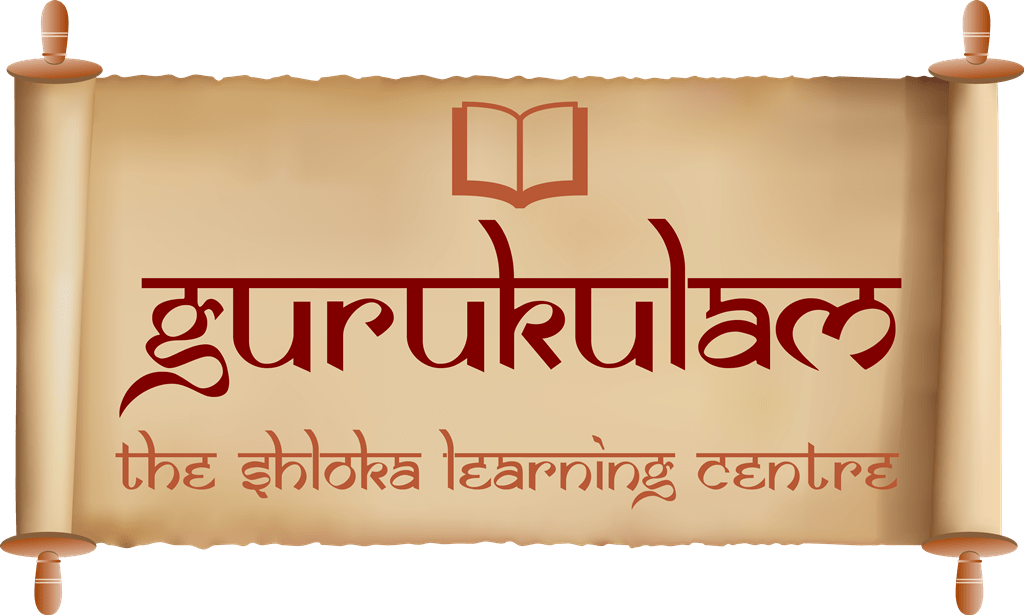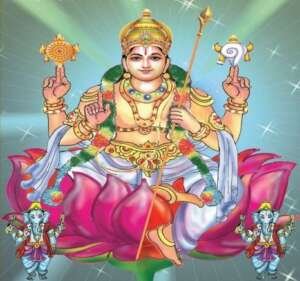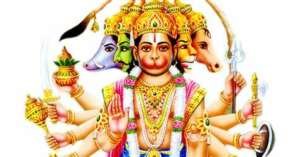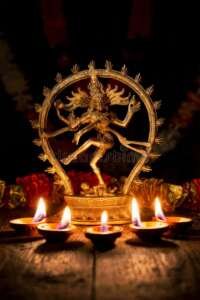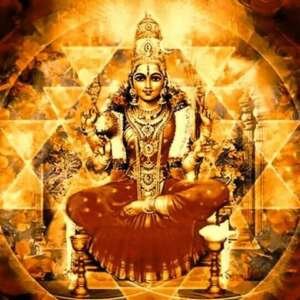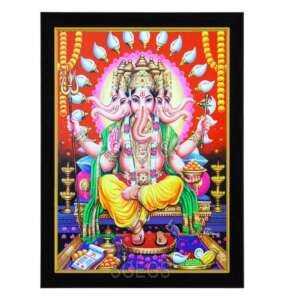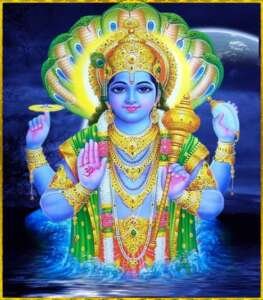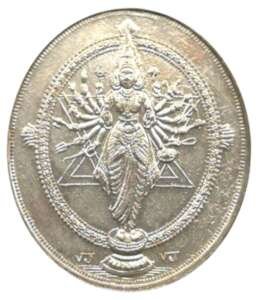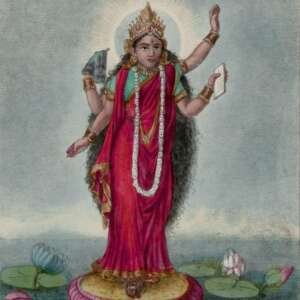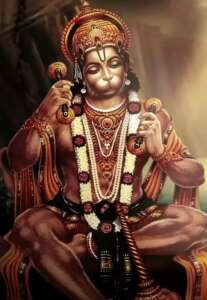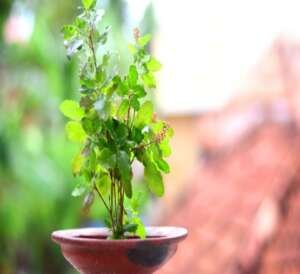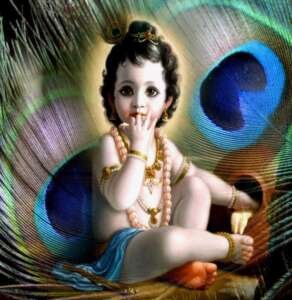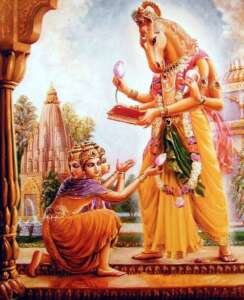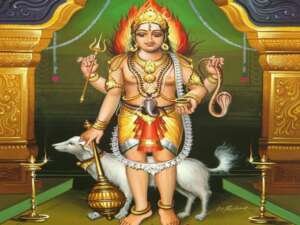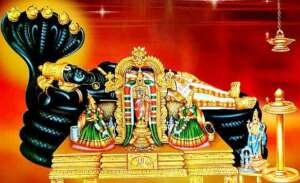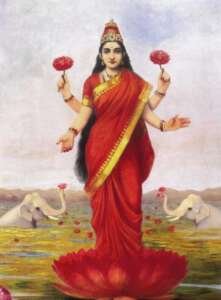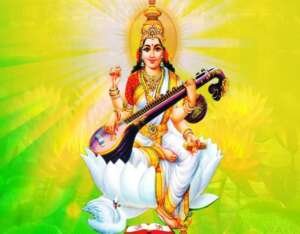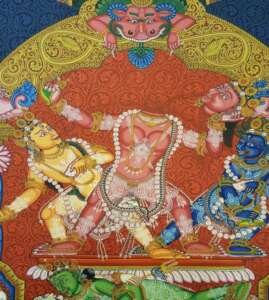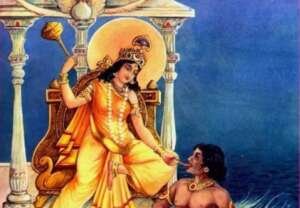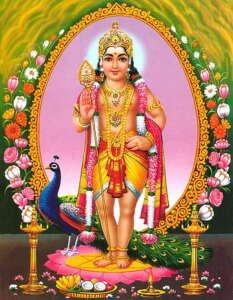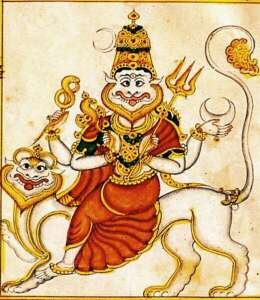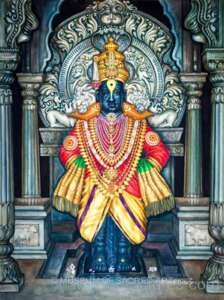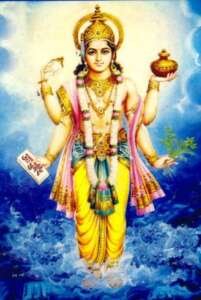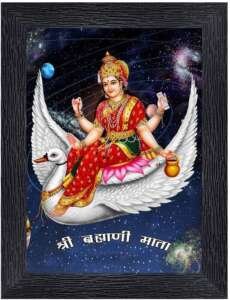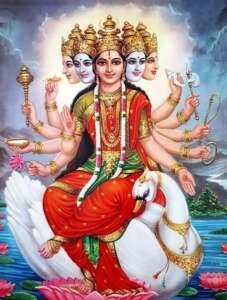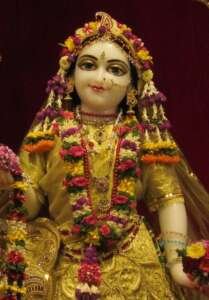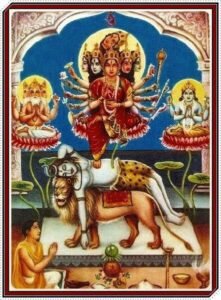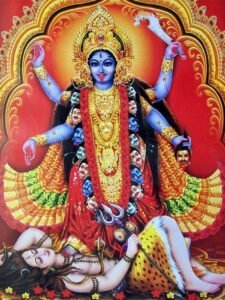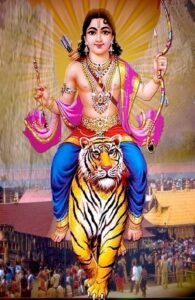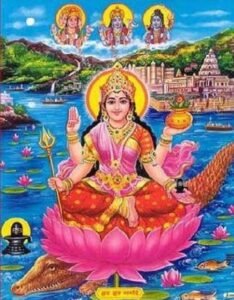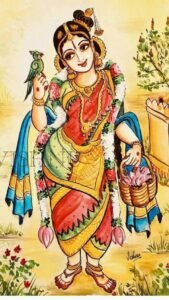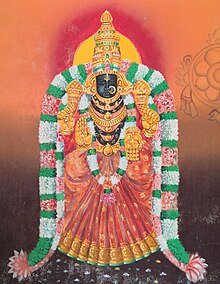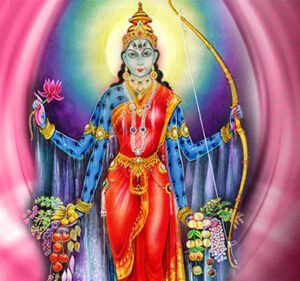- Lord Vishwaksena
- Panchamukhi Hanuman
- Lord Nataraja
- Goddess Astalakshmi
- Lord Guruvayurappan
- Goddess Rajarajeshwari
- Goddess Namagiri
- Goddess Bhuvaneshwari
- Goddess Annapoorni
- Lord Vamana
- Goddess Tripurasundari
- Lord Brahma
- Lord Panchamukhi Ganesha
- Lord Narayana
- Sudarshana Chakra
- Lord Balarama
- Goddess Kamalatmika
- Goddess Bhairavi
- Goddess Meenakshi
- Lord Hanuman
- Goddess Chottanikkara Bhagavathi
- Lord Narsimha
- Goddess Tulsi
- Lord Krishna
- Lord Hayagriva
- Lord Bhairava
- Sri Ranganatha Swamy
- Lord Rama
- Lord Lakshmi
- Goddess Saraswati
- Goddess Durga
- Lord(Guru) Raghavendra Swamy
- Goddess Matangi
- Goddess Chinnamasta
- Goddess Bagalamukhi
- Lord Muruga
- Goddess Pratyangira
- Lord Vithoba
- Lord Dhanvantari
- Lord Parashuram
- Lord Kubera
- Lord Sharabeshwara
- Goddess Brahmani
- Godess Gayatri Devi
- Godess Radha
- Goddess Ganeshani Devi
- Goddess Varahi
- Goddess Bala TripuraSundari
- Goddess Kamakhya
- Goddess Kali
- Goddess Sharadambika
- Lord Ayyappa
- Goddess Ganga
- Goddess Andal
- Goddess Chamundeshwari
- Goddess Padmavathi
- Goddess Shitala
- Goddess Shakambari
- Lord Shiva
Lord Vishwaksena
Who is Lord Vishwaksena ?
Lord Vishwaksena also known as SENAI MUDALVAR or SENADHIPATHI (Army Chief) is the Commander in Chief of The Hindu God Vishnu and The Gate Keeper of Vishnu’s Abode VAIKUNTA.
Image Courtesy – Google
Lord Viswaksena is worshipped before any ritual or function in Sri Vaishnavism Sects. He occupies an important place in Vaikhanasa and Pancharatra Temple traditions where often temple festivals begin with his worship and procession.
The KURMA PURANA describes Vishwaksena as born out of a portion of Lord Vishnu carrying a Conch (Shankha), Sudarshana Chakra (Discus), Gada (Mace) and wearing clothes like his MASTER.
The KALIKA PURANA describes him as an attendant of Lord Vishnu who has 4 arms and is red and brown in complexion. He sits on a white lotus has a long beard and wears matted hair. In a hymn, the remark is that Lord Vishwaksena carries all attributes of Lord Vishnu including the srivatsa mark and his weapens.
Lord Vishwaksena does not appear in The Vedas or The Dharma Shastra Texts but his worship is mentioned in The Pancharatra and other Agama Texts. He is believed to symbolise the sacred Agama Scriptures.
The 12 Alwar Saints of Sri Vaishnavism Sect are considered as manifestations of Lord Vishnu in some form and The Alwar Saint – Nammalwar is considered as an Avatar of Lord Vishwaksena.
In one of The Puranas , Ramayana it is mentioned that Sugreeva – The Chief of The Vaanara Army that helped Lord Rama (The 7th Avatar of Lord Vishnu ) in Treta Yuga was an Avatar of Lord Vishwaksena.
Why Worship Lord Vishwaksena?
Lord Vishwaksena occupies an important place in The Vaikhanasa Sect of Vaishnavism, the sect dedicated to Lord Vishnu.
Any ritual/function begins with the worship of Lord Vishwaksena. As the commander in chief of Lord Vishnu’s Army he is believed to protect the ritual/function from obstacles and evil. The role is similar to that of Lord Ganesha who generally is the first worshipped God in Hinduism especially Shaiva Traditions.
At the Tirumala-Tirupathi Venkateshwara Temple which follows Vaikhanasa Traditions, Lord Vishwaksena is worshipped before any temple ritual. This temple for Lord Vishwaksena is located in the Northern Side of the Main Temple in The Mukkoti Pradakshinam. The Temple festival–Brahmotsavam commences with the worship of Lord Vishwaksena and his bronze icon is taken in procession around the temple. Lord Vishwaksena is believed to arrange for the festival and ensure that it goes on smoothly.
SHLOKA
Yasya Dvirada VaktradaH
ParishadyaH Parassatam
Vighnam Nighnanti Satatam
Vishvaksenam Tamashraye
~ The above shloka is taken from The Vishnu Sahasranaamam ~
Meaning: I seek shelter of Lord Vishwaksena, the elephant faced God who possesses two tusks and who always removes another hundred obstacles
Article by – Divyaa Doraiswamy
Panchamukhi Hanuman
Lord Hanuman is an ardent devotee of Lord Rama (7th Avatar of Lord Vishnu) and the giver of strength and courage. Panchamukhi is a Sanskrit Word meaning Five Faced.
The Origin of Sri Panchamukhi Hanuman or Anjaneya can be traced to a story in The Ramayana.
During the war between Lord Rama and Ravana, Ravana took the help of Ahiravana –The King of Paathala(Patala). Lord Hanuman in order to protect Lord Rama and Lakshmana formed a fortress with his tail. Ahiravana took the form of Vibhishana, the noble brother of Ravana and took Lord Rama and Lakshmana to PatalaLoka. Lord Hanuman entered Patalaloka in search of Lord Rama and Lakshmana. He found that the life of Ahiravana was hidden in the 5 lamps which were placed in different directions. He could be killed only by extinguishing all 5 lamps at the same time. To accomplish this Lord Hanuman had to take the form of Panchamukhi Hanuman.
This Panchamukhi form of Hanuman has 5 faces – Hayagriva, Narasimha, Garuda, Varaha and Hanuman himself. Lord Hanuman using these 5 faces in different directions blew out the lamps thereby killing Ahiravana.
Every face of Panchamukhi Hanuman has a beautiful significance —-
~ Lord Hanuman or Lord Aanjaneya faces THE EAST and grants ISHTA SIDDHI to HUMANITY (Purity and Success)
~ Lord UgraVeera Narasimha faces THE SOUTH and grants ABHISTA SIDDHI to HUMANITY (Victory)
~Mahaveera Garuda faces THE WEST and grants SAKALA SOWBHAGYA to HUMANITY (Overall Success)
~Lord Varaha faces THE NORTH and grants DHANA PRAPTI to HUMANITY (Wealth and Prosperity) and
~Lord Hayagriva faces THE SKY and grants SARVA VIDYA JAYA PRAPTI to HUMANITY (Knowledge)
There is a beautiful description of The Panchamukhi Hanuman in the Kamba Ramayanam (In Tamil) which talks about the Significance of Number 5 and is narrated as follows —-Lord Hanuman the son of one of the 5 elements (Son of the Wind–Pavana Tanaya) crossed one of the 5 elements (Water – The Ocean)through one of the 5 elements (The Sky) met the daughter of one of the 5 elements (Daughter of the Earth – Sita Devi) burnt down LANKA through one of the 5 elements (Fire)…
Article by – Divyaa Doraiswamy
Lord Nataraja
Lord Nataraja is a depiction of The Hindu God Shiva as the divine cosmic dancer. His dance is called TANDAVAM.
This sculpture is symbolic of Lord Shiva as The LORD of DANCE and DRAMATIC ARTS with its style and propotions made according to Hindu Texts on Arts. It typically shows Lord Shiva in one of The Natya Shastra Poses holding various symbols which vary with historic period and region trampling upon a demon shown as a dwarf (APASMARA or MUYALAKA) who symbolises spiritual ignorance.
This classical form of depiction appears in stone reliefs at The Ellora Caves and The Badami Caves at around the 6th Century. However around the 10th Century it emerged in Tamilnadu in its mature and best known expression in Chola Bronzes of various heights typically less than 4 feet.
Description: Lord Nataraja is a Sanskrit term wherein “Nata” means dance/art or drama and “Raja” means King. Thereby Lord Nataraja is the KING of DANCE or LORD of DANCE. In Tamil he is also known as “ SABESAN” which splits as “ SABAYIL AADUM EESAN” meaning “The Lord who dances on the dias”. This form is present in most Shiva Temples and is The Prime Deity in The Nataraja Temple at Chidambaram. The dance of Lord Shiva in Chidambaram forms the motif for all the depictions of Lord Shiva as Nataraja.
The two most common forms of Lord Shiva’s dance are THE LASYA (The gentle form of dance) associated with the creations of this world and THE ANANDA TANDAVA (Dance of Bliss – the vigorous form of dance)associated with the destruction of weary world views – weary perspectives and lifestyles. However in essence – Lasya and Tandava are just 2 aspects of Shiva’s nature for he destroys in order to create tearing down to build again.
In the hymn of Manikavasagar’s Thiruvasagam he testifies that at The Nataraja Temple in Chidambaram by the Pre Chola Period an abstract or “COSMIC” symbolism is linked to 5 elements (Pancha Bhoota) including ETHER. So Lord Nataraja is a significant visual interpretation of Brahmam and a dance posture of Lord Shiva.
Article By – Divyaa Doraiswamy
GODDESS ASTALAKSHMI
Astalakshmi are a group of 8 Manifestations of Devi Lakshmi – The Hindu Goddess of Wealth. She presides over 8 sources of wealth.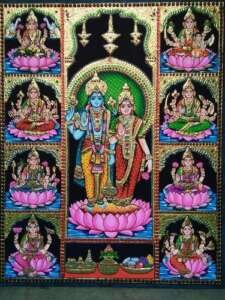
Image Courtesy – Google
WEALTH in the context of Astalakshmi means :-
~ Prosperity
~Fertility
~Good Fortune
~Good Health
~Knowledge
~Strength
~Progency and
~Power
Adi Lakshmi : Adi or Maha Lakshmi is the Primeval and the Ancient Form of Lakshmi
Dhana Lakshmi : The Goddess of Wealth
Dhanya Lakshmi : The Goddess of Agricultural Wealth
Gaja Lakshmi : The Giver of Animal Wealth (such as cattle) or The Giver of Power of Royalty
Santana Lakshmi: The Goddess of bestowing offsprings
Veera/Dhairya Lakshmi: The Goddess of Courage /Strength
Vijaya Lakshmi: The Goddess of Victory/Success
Vidya Lakshmi: The Goddess and Bestower of Knowledge
Temples: The Asta Lakshmi Temple in Besant Nagar, Chennai, Tamilnadu-India was built in the Year 1974 and is the first shrine dedicated exclusively to Asta Lakshmi where Goddess Lakshmi is given greater importance than Lord MahaVishnu. It has 8 small shrines arranged in clockwise direction dedicated to The Asta Lakshmi and then a 9th shrine dedicated to Lord MahaVishnu and Goddess Lakshmi together unlike the traditional separate shrines.
The other famous temples: Astalakshmi Temple, DilkushNagar- Hyderabad; Astalakshmi Temple, Sugar Land, Houston–Texas; Astalakshmi Temple, North Hollywood-California and Astalakshmi Devasthanam, Fremont-California
Article by – Divyaa Doraiswamy
LORD GURUVAYURAPPAN
Lord Guruvayurappan is the Lord of Guruvayur.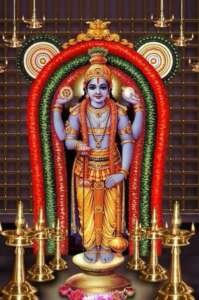
Image Courtesy – Google
Guruvayurappan comes from the words Guru meaning Brihaspati – The Guru of The Devas ,Vayu –The Wind God and Appan – Father. Since Guru and Vayu installed Lord Krishna’s deity, the name Guruvayurappan was given to the deity.
Lord Guruvayurappan is a form of Lord Vishnu who is worshipped as Lord Krishna in his child form also called Guruvayur Unnikannan in Kerala, India. This deity represents the PURNA RUPA (full manifestation)revealed by Baby Krishna to his parents Devaki and Vasudeva immediately after his advent in Kamsa’s jail.
This idol of Lord Guruvayurappan is almost 4 feet tall and made of A Stone called “Patala Anjanam” or “Black Bismuth” and is in the standing pose with 4 arms carrying The Panchajanya (Conch), The Sudarshana Chakra (Disc), The Kamodaki (Gadha or Mace) and Padma (The Lotus) all in Guruvayur.
This form of Lord Vishnu is worshipped mainly in Kerala. Even though the deity is that of CHATUR-BAHU (Four Handed) Vishnu, the concept of the people is that the deity is the infant form of Lord Krishna
Article by – Divyaa Doraiswamy
GODESS RAJRAJESHWARI
Goddess Rajarajeshwari is the Presiding Deity of The Sri Chakra.
Goddess Rajarajeshwari is one of the most powerful forms of Goddess Shakti – The Mother Goddess. She blesses every sentient and insentient being with the joy of living. She has the magnificent power of creating the universe and to destroy it.
Image Courtesy – Google
Goddess Rajarajeshwari is the Goddess of The First and The Second Chakras namely – Moola Chakra and Swadistana Chakra.
As per spiritual practise she stays on Sahasrara Chakra (The top of the head) and also on the Swadistana Chakra, thus praying to her helps in keeping thoughts, desires, lifestyle and health in control. She also elevates the supreme power of the performer from his/her physical body and makes him perform internal sacrifice.It is a belief that those who worship Goddess Rajarajeshwari can see her Divine and Pleasant Blessings on them and those have evilness in their heart and mind can see her as a Demon who demolishes them.
Goddess Rajarajeshwari is called The Mother of The Universe.
Shloka:
Amba Sambhavi Chandramouli-rabhala Aparna Uma Parvathi
Kali Haimavathi Shivaa Trinayana Kathyanani Bhairavi
Savithri Navayavvana Subhakari Samrajyalakshmi prada
Chidrupi Paradevata Bhagavathi Sri Rajarajeshwari
Meaning:O Goddess Amba, Sambhavi (the consort of Shambhu- Shiva), adorned with a crescent moon on the forehead, O goddess Aparna (Who had done tapas even without even eating leaves as food), who is known with the names Uma ( the name called by Menaka Devi to goddess Parvathi during her penance to God Shiva), Parvathi (The daughter of Parvatha- Mountain Himavanta)…
Kali (the black one), Haimavathi (daughter of the Himavanta), Shivaa (consort of God Shiva), Trinayana (the three-eyed one), Kathyanani (daughter of Katyayana Maharshi), Bhairavi (consort of god Bhairava- Shiva)…
Who is also known by the name Savithri and who is forever young, the auspicious one and the bestower of wealth to the kingdoms…
(I bow to you) The supreme goddess who is beyond all with a divine form, O Goddess Sri Rajarajeshwari…
(A Verse taken from The Rajarajeshwari Astakam)
Article by – Divyaa Doraiswamy
GODDESS NAMAGIRI
Goddess Namagiri is a form of Hindu Goddess Lakshmi worshipped in Namagiri, a city also called Namakkal in modern Tamilnadu, India. In Hindu Theology, she is the consort of Lord MahaVishnu.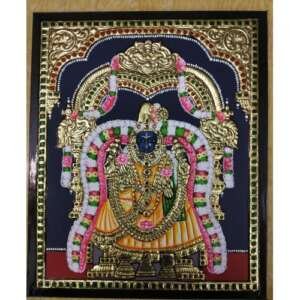
Image Courtesy – Google
There is a little story that dates back to this Goddess and Temple.
Srinivasa Ramanujan Iyengar was an Indian Mathematician who lived during The British Rule in India. Though he had no formal training in pure mathematics he made substantial contributions to mathematical analysis, number theory, infinite series and continued fractions including solutions to mathematical problems then considered unsolvable.
Srinivasa Ramanujan credits his mathematical findings to Namagiri Thayar (Goddess). According to Ramanujan she appeared to him in vision proposing mathematical formulas that he then had to verify. One such event described by Srinivasa Ramanujan was — He says, “While asleep, I had an unusual experience .There was a red screen formed by flowing blood as it were. I was observing it. Suddenly a hand began to write on the screen. I became all attention. That hand wrote a number of elliptic integrals. They stuck to my mind. As soon as I woke up, I committed then to writing.
Furthermore Ramanujan’s mother received permission from Namagiri Thayar(Goddess) for Ramanujan to go to England in a dream.
Article by – Divyaa Doraiswamy
GODDESS BHUVANESHWARI
Goddess Bhuvaneshwari is the 4th amongst the 10 Mahavidya Goddesses of Hinduism and an aspect of Goddess Parvati as elements of the physical cosmos in giving shape to the creation of the world.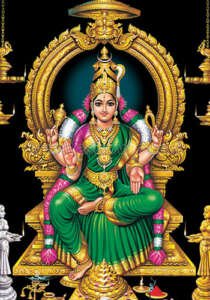
Image Coutesy – Google
Goddess Bhuvaneshwari is also called “Adi Parashakti” one of the earliest forms of Shakti. Her consort is Lord Bhuvaneshwara.
The word “Bhuvaneshwari” is a compound of the words Bhuvana + Eshwari meaning “Goddess of the World” or “Queen of the Universe” where the worlds are the “Tri-Bhuvana” or “Three Regions” of Bhuh (Earth), Bhuvah (Atmosphere) and Svah (Heaven).
Goddess Bhuvaneshwari is the Goddess who rules over the universe. She is regarded as the Creator apart from being The Sustainer of the World. Known as Parvati, Durga amd Bhagavathi, Goddess Bhuvaneshwari is one of the manifestations of KALI – The Fierce Form of Divine Shakti.
The Holy Vedas hail her as ADITI– The Infinite and all Emcompassing Mother who holds the entire space in her cosmic womb. Goddess Bhuvaneshwari is thus Cosmos personified.
Goddess Bhuvaneshwari holds the Angusam or The Elephant Goad and The Noose in two of her hands, while showering her blessings on the devotees with her two other hands.
There are numerous legends reading this Goddess, one of which talks about Lord Rama propitiating Goddess Bhuvaneshwari before his successful final assault on Demon Ravana.
Article by – Divyaa Doraiswamy
GODDESS ANNAPOORNI
Goddess Annapoorni is the Hindu Goddess of Food and Nourishment.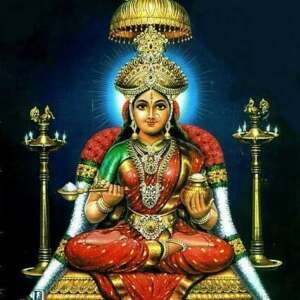
Image Courtesy – Google
Worship and offering of food are highly praised in Hinduism and therefore The Goddess Annapoorni is regarded as a popular deity. Goddess Annapoorni is the manifestation of Goddess Parvati , the consort of Lord Shiva. The Festival – Akshaya Tritiya is considered the birthdate of The Goddess Annapoorni and the day is believed to be very auspicious for buying gold jewellery.
Annapoorni is derived from the Sanskrit meaning Anna meaning food/grains and Purni meaning full/complete and perfect.
It is believed that Mount Annapurna in The Himalayas is named after Gooddess Annapoorni as The Goddess is believed to be one of the daughters of Himavat – The king of Mountains. However The Western World names her “The Hindu Goddess of Cooking” considering her association with food items.
Article by – Divyaa Doraiswamy
LORD VAMANA
Lord Vamana is the 5th of the 10 Incarnations or Avatars of Lord Vishnu.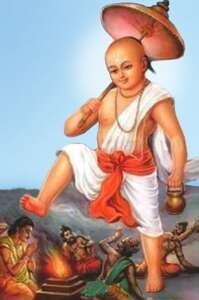
Image Courtesy – Google
Lord Vishnu in this Avatar is often identified as “TRIVIKRAMA” – The God of 3 Strides with which he measured out 3 worlds – Earth, Heaven and The Space between them. The very purpose of this Avatar was to protect The Devas who were rendered homeless ever since MahaBali having consolidated his powers is reinging supreme over the 3 worlds.
In this Avatar – Lord Vishnu was in the FORM of A HUMAN.
Lord Vamana was a short-statured celibate Brahmin Boy with adorable divine features. This form can be termed somewhat deceptive as Lord Vishnu assumed this manifestation to get the better of an upright but haughty demon called MAHABALI and put him in place for restoring to The Devas their rightful kingdom i.e Lord Vishnu in this Avatar is believed to have asked MAHABALI to offer him 3 feet land as a form of offering.
The Vamana Avatar is believed to have taken place on Shravana Nakshatra and also on the 12th day(Dwadasi)of Shukla Paksha – The Waxing Moon Phase in the month of Bhadrapada (Aug-Sep). This is celebrated as Vamana Jayanthi or Vamana Dwadasi.
Article by – Divyaa Doraiswamy
GODDESS TRIPURASUNDARI
Goddess Tripurasundari also known as “Shodashi” and “Lalitha” is a Hindu Goddess and is an aspect of Goddess Parvati mainly venerated in Shaktism -The Goddess Oriented Sect of Hinduism. She is a prominent Mahavidya. She is glorified in many texts with Lalitha Sahasranaamam being the most popular one.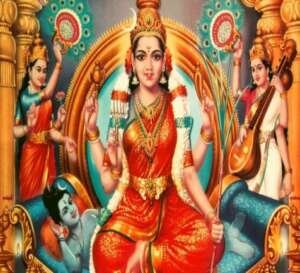
Image Courtesy – Google
Goddess Tripurasundari’s consort is Lord Shiva in the form Sadashiva further known as Kameshwara. She is also known by names as Shodashi, Lalitha, Kameshwari, Srividya and Rajarajeshwari.
According to Srikula Tradition in Shaktism Goddess Tripurasundari is the foremost of the Mahavidyas and the highest aspect of AdiParashakti or Parvati. The Tripura Upanishad places her as The Ultimate Shakti (Energy/Power) of The Universe. She is described as The Supreme Consciousness ruling from above Lord Brahma, Lord Vishnu and Lord Rudra.
Goddess Tripurasundari is said to be sitting on Lord Sadashiva’s lap in his Mahakameshwara Form – The Lord of Desire.
Tripura is The Three States of Consiousness and therefore Tripurasundari literally means “She who is beautiful in the three states of consciousness”.
Why is Goddess Tripurasundari called Tripura?
Goddess Tripurasundari is called Tripura because she is identical with The Triangle (Trikona) that symbolises The Yoni and that forms her Chakra.
She is called Tripura because her Mantra has Three Clusters of Syllables.
She is called Tripura because She is Threefold, furthermore because she expresses herself in Lord Brahma, Lord Vishnu and Lord Rudra in her roles as Creator, Maintainer and Destroyer of The Universe. She is also Threefold because she represents The Subject(Maul), Instrument(Mina) and Object(Meya) of all things.
She is called Tripura because she is beyond Three Gunas. She dwells in Three Worlds of Manas, Buddhi and Chitta.
Article by – Divyaa Doraiswamy
LORD BRAHMA
Lord Brahma is referred to as The Creator within The Trimurti – the triple deity of Supreme divinity that includes Lord Vishnu and Lord Shiva.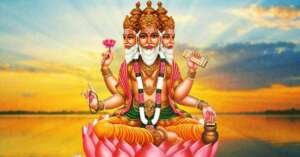
Image Courtesy – Google
Lord Brahma is referred to as “Swayambu” (Self Born) and is associated with Creation, Knowledge and Vedas. He is prominently mentioned in Creation Legends though there are many varying versions. In some Puranas, he created himself in a golden egg known as “Hiranyagarbha”. Lord Brahma is frequently identified with The Vedic God – “Prajapati”.
According to The Vaishnava Accounts of Creation, Lord Brahma was born in a lotus, emerging from the navel of Lord Vishnu. The Shaivism Sects believe that he is born from Lord Shiva or his aspects, while The Goddess Centric Shaktism states that Goddess Devi created The Universe, including Lord Brahma.
So how does Lord Brahma look?
Lord Brahma is commonly depicted as A Red or Golden complexioned bearded man with 4 heads and hands. His 4 hands represent The 4 Vedas and are pointed to the 4 directions. He is seated on a lotus and his Vahana is Hamsa (Swan/Goose/Crane). Goddess Saraswathi is genrally mentiones as Lord Brahma’s wife and she represents his creative energy (Shakti) as well as the knowledge which he possesses. According to scriptures, Lord Brahma created his children from his mind and thus they are referred as “Manasaputra”
In the present age Hinduism, Lord Brahma does not enjoy popular worship and has lesser importance than the other members of The Trimurti. The most famous temple of Lord Brahma is in Pushkar, Rajasthan.
The Puranas describe Lord Brahma as The Deity Creating Time. They correlate human time to Lord Brahma’s time such as “Mahakalpa” being a large cosmic period, correlating to one day and one night in Brahma’s existence.
Lord Brahma is known by several names – Vedanta(God of Vedas) ; Chaturmukha (Having 4 Faces) ; Gyaneshwar (God of Knowledge); Svayambu (Self Born) and BrahmaNarayan (Half Brahma and Half Vishnu).
Article by – Divyaa Doraiswamy
LORD PANCHAMUKHI GANESHA
Pancha means 5 and Mukhi means Face. This Lord Ganesha is shown having 5 faces. He is the embodiment of all potencies.
The most relevant meaning of The 5 Headed Ganesha is certainly that these heads symbolises The 5 Kosha in the subtle anatomy experienced.
Annamaya Kosha: The Flesh Body made of matter
Pranamaya Kosha: The Breath Body or Energy Body
Manomaya Kosha: The Mental Body
Vighnamaya Kosha: The Body of the upper consciousness and
Anandamaya Kosha: The Body of Cosmic Bliss
Thus the 5th head of Lord Ganesha symbolises the highest level of yogic experience called Anandamaya Kosha or Sat Chit Ananda, the pure consciousness without qualification. Thus this form of Lord Ganesha when kept at home/office brings auspicious vibrations of spirituality, harmony and bliss.
Placing Panchamukhi Vinayaka or 5 Faced Ganesha towards The East either at home or office would work wonders.
Lord Vinayaka has a special and powerful place in Hindu Mythology . He is considered as The God of Gods. The single headed Lord Ganesha can bestow umpteen benefits to the worshipper. Imagine worshipping The 5 Headed Elephant God – The Panchamukhi Ganesha, the benefits are multiplied Five-Fold, literally speaking. In fact, The Effect of Panchamukhi Vinayaka is so profound and irrevocable that all The Statisticians, The Quality Gurus, The Physicists and The Economists of The World would not be able to measure the benefits or its effects exactly or even remotely
Article By – Divyaa Doraiswamy
LORD NARAYANA
Lord Narayana is the one who is in yogic slumber under the celestial waters referring to Masculine Principle also linked with Vishnu according to Vaishnavite Hindu Belief.
Lord Narayana is called “Purushottama”and is considered The Supreme Being in Vaishnavism.
According to Vishnu Purana, Bhagavad Purana, Garuda Purana and The Padma Purana, Lord Narayana is Lord Vishnu himself who takes in different Avatars. The Bhagavad Gita calls Lord Narayana “The Guru of The Universe”. The Bhagavad Purana, The Purusha Sukta, The Narayana Sukta and The Narayana Upanishads from The Vedas say Lord Narayana is “The Ultimate Soul”.
So how does Lord Narayana Look?
In The Vedas and The Puranas, Lord Narayana is described as having the divine blue colour of water filled clouds, Four Armed holding A Padma (Lotus) Kaumodaki (Mace), Panchajanya Shanka (Conch) and Sudarshana Chakra (Discus).
In The Mahabharata Lord Krishna is synonymous with Lord Narayana and Arjuna is referred to as Nara. The Epic identifies them both in plural “Krishnas” or as PART INCARNATIONS of their earlier incarnations of Lord Vishnu recalling their mystical identity as “NaraNarayana”.
Lord Narayana is also described in The Gita as having a Universal Form (Vishwarupa) which is beyond the ordinary limits of human perception of imagination.
Article by – Divyaa Doraiswamy
SUDARSHANA CHAKRA
The Sudarshana Chakra is a spinning discus weapon with 108 serrated edges used by The Hindu Lord Vishnu or Lord Krishna on the right rear hand of the 4 hands of Lord Vishnu who also holds A Shanka (Conch), A Gadha (Mace) and A Padma (Lotus).
While in the Rig Veda, The Sudarshana Chakra was Lord Vishnu’s symbol as the wheel of time and by the late period, The Sudarshana Chakra emerged as an Ayudapurusha as a fierce form of Lord Vishnu used for destruction of Demons. As an Ayudapurusha, the deity is known as Chakraperumal or Chakrathazhwar.
The word Sudarshana is derived from the Sankrit Words: Su = Auspicious/Good and Darshana = Vision. In Tamil, The Sudarshana Chakra is also known as Chakrathazhwar (Ring or Circlet of God).
As a Weapon: According to The Ahirbudhanya Samhita – Lord Vishnu in the form of The Chakra was held as the ideal of worship for kings desirous of Universal Sovereignity, a concept associated with The Bhagavata Cult in The Puranas a religious condition traceable to the Gupta Period which also led to the Chakravarthi Concept.
Worship: Though Chakraperumal or Chakrathazhwar Shrines (Sannidhis) are found in Lord Vishnu Temples, there are very few temples dedicated to Chakraperumal alone as the main deity also called Moolavar.
~Sri Sudarshana Bhagavan Temple, Nagamangala
~Chakrapani Temple, Kumbakonam located on the banks of The Chakra Bathing Ghat of The Kaveri River. Here the God is Chakrarajan and his consort is Vijayavalli
~Thuravur Narasimha Temple, Alappuzha-Kerala is a 2 sanctum temple wherein Lord Narasimha and Lord Sudarshana are the main deities.
~Jagannath Temple, Puri here Lord Sudarshana is also the main deity.
The icons of Chakraperumal are generally built in Vijayanagar style. There are 2 forms of Chakraperumal – one with 16 arms and another with 8 arms. The one with 16 arms is considered The God of Destruction and is rarely found. The Chakraperumal Shrine in The Simhachala Temple is home to the rare 16 armed form. The one with 8 arms is benevolent and is the form generally found in Vishnu Temples.
Article by – Divyaa Doraiswamy
LORD BALARAMA
Lord Balarama – A Hindu God and The Elder Brother of Lord Krishna is particularly significant in The Jagannath Tradition as one of the triad deities. He is also known as Baladeva, Balabhadra, Haladhara, Halayudha and Sankarshana.
Lord Balarama is sometimes described as an Avatar of Sesha , the serpant associated with Lord Vishnu. Lord Krishna is the 8th Avatar of Lord Vishnu , however some traditions regard Lord Balarama as one of the 10 Principle Avatars of Lord Vishnu himself.
Lord Balarama is depicted as light skinned in contrast to his brother Lord Krishna who is dark skinned. His Ayudha or Weapons are The Plough (Hala) and The Mace (Gada). The Plough is usually called BalaChita. He often wears blue garments and a garland of forest flowers. His hair is tied in a topknot and he has earrings, bracelets and armlets.
Lord Balarama is known for his strength, the reason for his name —Bala means Strength. In Short, Lord Balarama is the symbol of strength, an obedient son, an ideal brother and husband, an ideal man and God. He is known as NILAVASTRA as he is said to have a fair complexion and clad in a dark blue vest.
Lord Balarama is the celebrated plougher – one of the Pillars of Agriculture along with livestock with whom Lord Krishna is associated with. The Plough is Lord Balarama’s weapon. In the Bhagavad Purana he uses it to fight demons, dig the way for The Yamuna River to come closer to Vrindavan and pull the entire capital of Hastinapura into The Ganges River.
According to Hindu Texts, Lord Balarama almost always supports Lord Krishna in form and spirit. However there are occassions where the dialogues between Lord Balarama and Lord Krishna present different viewpoints with Lord Krishna’s wisdom establishing him to be the ultimate divinity. Lord Balarama’s constant symbolic association with Lord Krishna makes him the protector and supporter of Dharma.
The Bhagavad Purana says that “ Balarama, the son of Rohini increases the transcendental bliss of others . His name is Rama and because of his extraordinary strength he is called Baladeva. He attracts The Yadus to follow his instructions and therefore his name is Sankarshana.
Article by – Divyaa Doraiswamy
GODDESS KAMALATMIKA
In Hinduism Goddess Kamala or Kamalatmika is The Devi in the fullness of her graceful aspect. She is believed as the 10th and The Last Mahavidya, a form of Goddess Parvati and is the wife of Lord Shiva’s Kamal Bhairava Avatar. This is the form of Goddess Parvati in which she is the dearest and loving wife of Lord Shiva’s Kamalavatar.
How does Goddess Kamalatmika appear/look?
Goddess Kamalatmika has a GOLDEN Complexion. She is being bathed by 4 large elephants who pour KALASHAS of AMRITA (Nectar) over her. She has 4 hands. In 2 hands she holds 2 lotuses and her other 2 hands are in Abhaya Mudra (Gesture of giving assurance) and Vara Mudra (Gesture of conferring boons). She is also seated in Padmasana(Lotus Posture) on a Lotus (The Symbol of Purity).Goddess Kamalatmika is always SMILING – her personal charm is par excellence. Her palms are always extended to bless. KAMALA expounds the atmosphere of divine happiness, spiritual satisfaction and prosperity. She is linked to fertility, crops advancement and profits, material wealth and goodluck.
Goddess Kamala is associated with creation of wealth and beauty all around us. Often called THE TANTRIC LAKSHMI – The Sadhakas of Mahavidya Kamalatmika will never experience scarcity or lack of anything through his/her lifetime. The Sadhaka is sure to get abundant wealth or the ultimate knowledge of liberation. As mentioned in The Garuda Purana, Linga Purana and Padma Purana, she attains the title of SHREE and grants all her devotees the blessings of materialistic and spiritual comforts. This unifies the concept of Shaivism (also Shaktisism) and Vaishnavism. Goddess Kamalatmika is a little different from Goddess Lakshmi in the sense that she is the wisdom aspect of Goddess Lakshmi who relates specifically to the practise of YOGA. So she is also a form of GODDESS KAALI.
Article by – Divyaa Doraiswamy
GODDESS BHAIRAVI
Tripura Bhairavi is a Hindu Goddess associated with the Mahavidyas. She is the consort of Tripurantak Mahadev – none other than Lord Shiva.
The very name Bhairavi means “TERROR” or “AWE INSPIRING”. Goddess Bhairavi is the 5th of the 10 Mahavidyas. She is also called TripuraBhairavi. Tripura basically conveys 3 stages of consciousness – Active, Dream and Deep Sleep.
So how does Goddess Bhairavi look?
Seated on a Lotus, Goddess Bhairavi is seen with 4 hands, one with a book, one with rosary beads, one with Abhaya Mudra and another with Varada Mudra. She wears garments and wears a garland of several heads around her neck. She has 3 eyes and her head is adorned with a crescent moon. Goddess Bhairavi is also depicted as sitting on Lord Shiva and many times depicted as A Queen closely resembling Goddess Rajarajeshwari. Goddess Tripura Bhairavi is set to be residing in Muladhara Chakra. The innermost triangle of the Muladhara Chakra is called KAMARUPA. The 3 points of the triangle have 3 Bijakshara’s (Sacred Letters) and each side of the triangle represents Iccha Shakti (Divine Will), Jnana Shakti (Divine Knowledge) and Kriya Shakti (Divine Action).
Article by – Divyaa Doraiswamy
GODDESS MEENAKSHI
Goddess Meenakshi also called Angayar Kanni is a Hindu Goddess and tutelary deity of Madurai who is considered an Avatar of Goddess Parvati. She is the divine consort of Lord Sundareshwarar, a form of Lord Shiva.
Meenakshi is a Tamil – Sanskrit term meaning “Fish – Eyed” derived from the words Mina = Fish and Akshi = Eyes.
Goddess Meenakshi finds mention as The Princess or The Queen of Ancient Pandiya Kingdom who elevates her to Gohead.
The Goddess Meenakshi is also extolled by Adi Shankara as “Shri Vidhya”. She is mainly worshipped in South India where she has a major temple devoted to her known as The Meenakshi Amman Temple in Madurai, Tamilnadu.
In The Meenakshi Amman Temple, Goddess Meenakshi is the principal deity of the temple, unlike most Shiva Temples in South India where Lord Shiva is the Principal Deity. In this temple the marriage of Goddess Meenakshi and Lord Shiva is the biggest event where all Gods, Goddesses and living beings gather. Lord Vishnu is the brother of Goddess Meenakshi and he gives her away to Lord Shiva at the wedding.
Article by – Divyaa Doraiswamy
LORD HANUMAN
Lord Hanuman is The Monkey God….
Lord Hanuman is the child of Vayu (the Wind God) and Anjana (The very word Anjaneya comes from the word Anjana). Lord Hanuman is an ardent devotee of Lord Rama, Goddess Sita and Lakshmana. Uttering Rama-Rama-Rama makes him the favourite devotee of Lord Rama.
Shloka:
Buddhir Balam Yasho Dhairyam
Nirbhayatvam Arogataam
Ajaaddyam Vaak Pattutvam Cha
Hanumat Smarannaat Bhavet
Meaning:
1: (From the contemplation on the character and activities of Hanuman) Intelligence (Buddhi) (to understand a situation), Strength (Bala) (to execute a work), Graceful Appearance (Yashas) (to please others), Patience (Dhairyam) (to wait for the appropriate moment and work with the appropriate pace), …
2: Fearlessness (Nirbhayatvam) (to tackle a situation), Free from Disease (Arogatam) (to work with good health), …
3: Free from Laziness (Ajadyam) (to be up and doing) and Skillfulness in Speech (Vak Patutvam) (to communicate properly), …
4: (All these) becomes (one’s own traits of character) from the contemplation on Hanuman.
Why Chant The Above Mantra?
Strength/Power/Courage are very closely associated with Lord Hanuman (The strength here is both Physical Strength and Mental Strength).
~The very chanting of this mantra increases a person’s resilience and he/she emerges victorious in every challenging situation i.e Lord Hanuman and Power are closely associated and hence one is blessed with qualities of courage and confidence by chanting this mantra.
~Problems relating to debt, mental disturbances and agony are quickly solved by regular chanting of this mantra.
Article by – Divyaa Doraiswamy
GODDESS CHOTTANIKKARA BHAGAVATHI
Goddess Chottanikkara Bhagavathi is a form of Goddess Mahalakshmi. She is believed to be residing in Chottanikkara along with her husband Lord Maha Vishnu.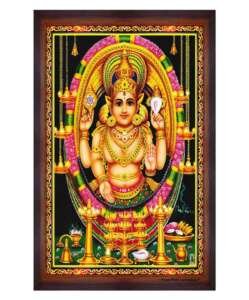
Image Courtesy – Google
The Temple is located at Chottanikkara a Southern Suburb of the City of Kochi in the State of Kerala, India and is one of the most popular temples in the State. This temple lies in a hilly terrain and is surrounded by greenery. The Temple has a calming and soothing influence on devotees.
The original idol of this Goddess Bhagavathi is around 4 feet tall ,facing east and is made of Red LATERITE. The Goddess here is believed to be “SVAYAMBU”. The image is called “RUDRAKSHA SILA” and is irregular in shape. The image can only be viewed early in the morning when the sanctum opens for NIRMALYAM.
The Devi is worshipped at this temple in 3 different forms:
~MahaSaraswathi – in the morning draped in WHITE.
~Mahalakshmi – in the afternoon draped in CRIMSON and
~Mahakaali – in the evening decked in BLUE.
This Golden Hued idol of Goddess Bhagavathi is beautifully decorated with colourful sarees and exquisite jewels.
She is seen holding A DISC in her Upper Right Hand , A CONCH on the Upper Left Hand. The Lower Right Hand is seen in a Pose Conferring Boons and The Lower Left Hand is seen in The Abhaya Mudra Pose. The CONCH and The DISC are the celebrated weapons of Lord Vishnu and hence Goddess Bhagavathi is also viewed as an embodiment of Lord Vishnu and it is no surprise that people worship her with the chants —-
“Amme Narayana – Devi Narayana ; Lakshmi Narayana – Bhadre Narayana”
Why pray to this Amman?
Goddess Bhagavathi is a divine healer who can cure devotees of incurable diseases and mental illnesses and also free them from possession of evil spirits.
The mantra —
“Amme Narayana – Devi Narayana ; Lakshmi Narayana – Bhadre Narayana”
The above mantra addresses the The Universal Energy (Bothe Male and Female) as Amme Narayana ..
The Source of Knowledge and Wdom as Devi Narayana ,
The Source of Wealth, Good Health and Happiness as Lakshmi Narayana and
The Protector from all kinds of mental and physical diseases as Bhadre Narayana..
Article by – Divyaa Doraiswamy
LORD NARASIMHA
Lord Narasimha is the 4th Avatar of Lord Vishnu.
Many times called NARASINGA – he is regarded to have incarnated in the form of HALF LION-HALF HUMAN to slay Hiranyakashipu to end the calamity on Earth, thereby restoring Dharma and therefore regarded as an Embodiment of Victory.
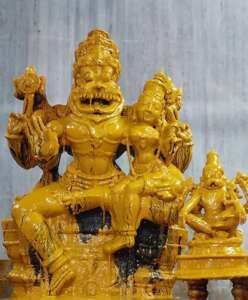 Image Courtesy – Narasimha Temple, Bangalore
Image Courtesy – Narasimha Temple, Bangalore
Lord Narasimha is usually depicted with a fierce look on his face with bulging eyes and 4 to 16 hands carrying different weapons which include the mace, discus, conch and axe. One hand is always in Abhaya Hasta (The Blessing Posture). Sometimes he is depicted seated calmly with his consort Goddess Lakshmi as Lakshmi Narasimha.
Lord Narasimha is often depicted with 3 eyes and is referred to as the God of Destruction in Vaishnavism i.e the one who destroys the entire Universe during MAHAPRALAYA (at the time of great dissolution). He is known as KALA (Time) or MAHAKALA (Great Time) or PARAKALA (Beyond Time) in his epithets.
Narasimha in Sanskrit consists of 2 words : Nara (Man) and Simha (Lion) referring to a Man-Lion Avatar of Lord Vishnu.
Lord Narasimha is said to have appeared at Dusk on The Shukla Paksha Chaturdashi, The 14th Lunar Day of the bright fortnight of the moon in the Msonth of Vaishaka (April-May) when SWATHI NAKSHATRAM was ruling. This day is observed as NARASIMHA JAYANTI.
There are 9 forms of Lord Narasimha which are widely described:
Ugra Narasimha, Yoga Narasimha, Lakshmi Narasimha, Krodha Narasimha, Malola Narasimha , Jwala Narasimha, Varaha Narasimha, Bhargava Narasimha and Karanja Narasimha.
Out of all these forms – The Lakshmi Narasimha is the form where Goddess Lakshmi is sitting on his lap and the Lord is calmer than other forms.
Lord Narasimha is one of the deities in Vaishnavism and his legends are referred in Vaikhanasas, Sri Vaishnavism and various Vaishnava traditions in Hinduism.
So Why Pray to Lord Narasimha?
Offerring prayers to The Lord can bestow one with a variety of benefits like mitigating sins, curing diseases, warding off negative influences of the 9 planets and also evil forces and fulillment of honest desires in respect of longevity, wealth, success and leading towards liberation.
Article by – Divyaa Doraiswamy
GODDESS TULASI
Often referred to as “The Queen of Herbs” Tulasi is native to India and is called The Holy Basil. Goddess Tulasi is revered by Hindus all over and is considered to be the manifestation of Goddess Lakshmi herself.
A Vaishnava Legend relates The Origin of Goddess Tulasi to Samudra Manthana – the churning of The Cosmic Ocean by The Devas and The Asuras. At the end of the churning, Lord Dhanvantri rose from the ocean with AMRITA (The elixir of immortality). During this time Lord Vishnu is believed to have shed happy tears – The first of which fell into The AMRITA and FORMED THE TULASI.
The Devi Bhagavata Purana regards Goddess Tulasi as A Manifestation of Goddess Mahalakshmi – The Goddess of Wealth, Prosperity, Fortune and The Principle Consort of Lord Mahavishnu. Goddess Tulasi is very sacred in the worship of Lord Vishnu and the related Vaishnava Deities.
Our homes are known to have two types of Tulasis’ – The Rama Tulasi (Green in Color ) and The Krishna Tulasi (Blackish Green in Color).
Shloka:
NamasTulasi Kalyani -Namo Vishnupriye Shubhe
Namo Moksha Pradey Devi -Namah Sampat Pradaayinee
Meaning: I bow down to the auspicious Tulasi who is dear to Lord Vishnu, who brings good luck to the devotees, who guides one to attain salvation and who showers all the wealth to the devotees.
Why Pray to Goddess Tulasi?
Watering of The Tulasi Plant and Chanting of the above mantra can bring about blessings of Lord Vishnu and Goddess Lakshmi thereby improving wealth and reducing financial problems.
Regular Chanting of this shloka helps to bring about peace at home and harmony among family members.
Tulasi as a plant is believed to have a lot of medicinal properties and therefore chanting of this mantra can help heal respiratory diseases, improve immunity and reduce stress.
Article by – Divyaa Doraiswamy
LORD KRISHNA
Lord Krishna is A Very Important Avatar of Lord Vishnu and the Number 8 is very closely associated with him. Here’s why…
—-Lord Krishna is the 8th Avatar of Lord Vishnu.
—-Lord Krishna is the 8th Child of Devaki and Vasudeva.
—-Lord Krishna was born on the 8th day of Krishna Paksha –Astami and therefore his birthday is celebrated as Krishnaastami /Janmaastami or Gokulaastami.
—-During his life as a mortal he is believed to have married 8 wives also called ASTABHARYA (Asta = 8) and (Bharya = Spouse).
—-Lord Krishna is believed to have lived on Earth for 125 years i.e 1+2+5 sums to Number 8.
What is so special about the Hare Krishna Mahamantra ?
Mantra:
Hare Krishna Hare Krishna Krishna Krishna Hare Hare
Hare Rama Hare Rama Rama Rama Hare Hare
Meaning: O Krishna, O Energy of Krishna please engage me in your service. “HARE” – is an Address to God’s Energy known as Radha. “KRISHNA” – is Lord Krishna i.e he who is attractive to everyone. “RAMA” – means one who gives pleasure.
—-The Bhagavad Gita says that Lord Krishna and Chanting of His Name is the same. So when we chant the Hare Krishna Mahamantra it actually means -Lord Krishna is Dancing on Our Tongue.
—-Chanting of the Mahamantra helps one get control over his mind i.e all of us are slaves to desire and are controlled by our thoughts. The Gita says – “One must Conquer the Mind” and for those who have – their mind is the best of friends and for those who haven’t – their mind will be their greatest enemy.
—-This Mahamantra helps us find Happiness and regular chanting helps us come in direct contact with the Almighty thereby giving us Transcendental Happiness.
—-Each of us know that for Every Action there is An Equal and Opposite Reaction – KARMA. Spiritually it means that for every material action performed nature forces an equivalent reaction upon the performer and this mahamantra helps in building positive karma.
Article by – Divyaa Doraiswamy
LORD HAYAGRIVA
Lord Hayagriva is a lesser known incarnation of Lord Vishnu. He is the Horse Faced – Human Form of Lord Vishnu and the Giver of Knowledge/Education or Wisdom.
The reason for donning and being reborn in this avatar was to save the Vedas from the Demons. It was his responsibility to RESTORE all the knowledge to the rightful place. The Horse Head in the incarnation signifies higher learning and wisdom.
So how does Lord Hayagriva Look?
Lord Hayagriva is Brilliant White in Color with White Garments and seated on a White Lotus. He has 4 Hands – one hand aiming at bestowing knowledge, another hand holding books of wisdom and the other 2 hands holding the Conch and Discus.
Legends have it that Lord Vishnu revealed the Vedas to Lord Brahma at the time of Creation. Realising the power of these Vedas – 2 demons named Madhu and Kaitabha stole The Vedas from Lord Brahma and hid them at the bottom of the ocean. When Lord Brahma sought Lord Vishnu’s help to retrieve the sacred texts , Lord Vishnu took the Form of Lord Hayagriva , killed the 2 demons and returned The Vedas to Lord Brahma.
Lord Hayagriva is also called The Lord of Speech. He is a prominent deity in Vaikhanasas, Sri Vaishnavism and The Dwaita Vedanta Traditions. His blessings are generally sought when beginning the study of both Sacred and Other Subjects. He is specially worshipped on The Shravana Pournami Day – The Day of his incarnation and on Mahanavami –the 9th Day of The Navaratri Festival.
Article by – Divyaa Doraiswamy
LORD BHAIRAVA
Lord Bhairava also called Maha Kala Bhairava is a deity worshipped by Hindus.
In Shaivism, he is a fierce manifestation of Lord Shiva associated with annihilation. Generally in Hinduism, Lord Bhairava is called Dandapani – As he holds a rod or a danda to punish sinners and Swaswa meaning whose vehicle is a Dog
Normally in Lord Shiva Temples, idols of Lord Bhairava are situated in The North facing Southern Direction. He is called Kshetrapaala. He appears in a standing position with 4 hands. His weapons are Drum, Paasa (The Noose), Trident and Skull. He appears without a dress and with A Dog.
The Puranas give a very beautiful version of Lord Bhairava. In this version there was a war between Gods and Demons. To eradicate the demons, Lord Shiva created Kala Bhairava from whom Astanga Bhairava were created. These AstaBhairavas married Asta Matrikas. From these Asta Bhairavas and Asta Matrikas, 64 Bhairavas and 64 Yoginis were created.
Lord Bhairava is also called upon as A Protector – as he guards the 8 Directions of The Universe. In Lord Shiva temples, when the temples are closed, the keys are placed before Lord Bhairava.
Article by – Divyaa Doraiswamy
LORD RANGANATHA SWAMY
Sri Ranganatha Swamy is also known as Ranganathar, Rangan, Aranganathar and Ranga.
Lord Ranganatha’s name in Sanskrit means “Leader of The Place of Assembly” coined from two Sanskrit words Ranga (Place) and Natha (Lord or Leader).
The deity is a resting form of Lord Vishnu, recumbent on the great form of the Serpent God- ADISHESHA, one of the foremost of Hindu Gods. His consort is Goddess Lakshmi also known as Ranganaayaki.
Lord Ranganatha’s two other consorts seen next to his recumbent figure are BhuDevi and NilaDevi. Most of the deities portray a “Smiling Lord” in a sleeping or reclining position over the Celestial Serpent ADISHESHA in The Sea of Cosmic Dissolution (Pralaya).
This is the form in which Lord Ranganatha is open to listening to all of his devotees woes and blesses them. Apart from being worshipped by all Hindus, this form is of particular importance to The Sri Vaishnava Community.
TEMPLES of LORD RANGANATHA:
The Pancharanga Kshetrams are the 5 most sacred Ranganatha Swamy Temples
- The Srirangapatna called the Adi Rangam (the first temple on the banks of the Kaveri River from the upstream side)
- The Shivanasamudra called The Madhya Rangam, Karnataka
- The Srirangam in Tamilnadu known as Kasthuri Rangam or Anthya Rangam (The last temple)
- Appalarangam or Koviladi at Tiruppernagar in Tamil Nadu,
- Parimala Ranganatha Perumal Temple at Tiruindalur in Mayiladuthurai or Mayuram and Vatarangam near Sirkazhi, also listed as Sri Renganatha Perumal Temple, Vadarengam, Tamil Nadu.
Article by – Divyaa Doraiswamy
LORD RAMA
Lord Rama is the 7th Avatar of Lord Vishnu.
Lord Rama is the incarnation of Lord Vishnu who descended on earth to annhilate demons and establish the path of Dharma. He was born to Kausalya and Dasaratha and has 3 brothers – Lakshmana, Bharata and Shatrughna. He married Goddess Sita Devi.
Lord Rama is very important to Vaishnavism and is the Central Figure of the Ancient Hindu Epic – Ramayana. He was born on the 9th day of the lunar month – Chaitra, a day celebrated as Rama Navami. This day also coincides with one of the Four Navaratris on The Hindu Calendar in the spring season namely Vasantha Navaratri.
Lord Rama is called Ram, Ramar, Ramachandra (Beautiful, Lovely Moon), Dasarathi (Son of Dasaratha) and Raghava (descendant of Raghu dynasty). Lord Rama is portrayed as polite, self controlled, a very virtuous youth always ready to help others. His education included the Vedas, The Vedangas and The Martial Arts.
How does Lord Rama Look?
Lord Rama has 2 hands, one holding A Bana (Arrow) in his Right Hand and the other holding The Dhanus (Bow) in his Left Hand. He is generally shown standing in a Tribhanga Pose (Thrice Bent “S” Shape). He is either shown Black, Blue or Dark Color typically wearing Reddish Color Clothes and if his wife Sita Devi and Brother Lakshmana are a part of the iconography then both are of Golden Yellow Complexion.
However Valmiki in Ramanyana describes Lord Rama as charming, well built person of dark complexion and long arms.
In The Sundara Kandam Section of The Epic , Lord Hanuman tell Goddess SitaDevi to prove to her that he is indeed a messenger of Lord Rama and describes Lord Rama as someone who has broad shoulders , mighty arms, conch shaped neck, a charming personality and coppery eyes. He tells Goddess SitaDevi that Lord Rama is full of glory , square built and is endowded with dark brown complexion.
Why Pray to Lord Rama?
It is believed that regular chanting of Lord Rama Mantras is a big uniting factor that leads to harmony, peace and promotes co-operation among family members, friends and people in society at large.
Article by – Divyaa Doraiswamy
GODDESS MAHALAKSHMI
Goddess Lakshmi is The Member of The Tridevi – The Triad of Great Goddesses.
Being The Goddess of Wealth and Fortune, Goddess Lakshmi is often shown with Lord Vishnu. She is known to play a key role as a mediator between her husband Lord Vishnu and his worldly devotees. It is a strong belief that when asking Lord Vishnu for a wish or grace, devotees often approach him through the intermediary presence of Goddess Lakshmi. She signifies spiritual fulfilment.
How does Goddess Lakshmi look?
Goddess Lakshmi is shown elegantly dressed, prosperity showering golden colored lady Standing or Sitting in Padmasana on a Lotus Throne while holding a lotus in her hand, symbolizing fortune, self knowledge and spiritual liberation. Her iconography shows her having 4 hands representing 4 aspects of human life – Dharma, Artha, Kama and Moksha. Below, behind or on the sides Goddess Lakshmi is very often shown with 1 or 2 elephants known as GajaLakshmi and occasionally with an Owl.
Goddess Lakshmi is often represented with her husband Lord Vishnu , the Lord who maintains human life filled with justice and peace. This symbolism implies wealth and prosperity and are coupled with the maintainance of life, justice and peace.
—- The Mahabharata says that Goddess Lakshmi personifies wealth, riches, happiness, grace and charm.
—- The Ramayana says – Goddess Lakshmi springs with other precious things from the foam of the ocean of milk when it is churned by the Gods and Demons for the recovery of Amrita. She appeared with a Lotus in her hand. She is also called Padma. Goddess SitaDevi of the Ramayana and her husband Lord Rama are considered as Avatars of Goddess Lakshmi and Lord Vishnu respectively.
Article by – Divyaa Doraiswamy
GODDESS SARASWATHI
Goddess Saraswathi – The Hindu Goddess of Knowledge , Education ,Wisdom, Music, Art, Speech and Learning is one of The Tridevi’s – along with Goddess Lakshmi and Goddess Parvathi. She is the wife of Lord Brahma (The Creator of the Universe) and is also called Sharada or Vakdevi.
So how does Goddess Saraswathi Look?
Depicted as a beautiful lady, dressed in pure white clothes with white ornaments often seated on a white lotus symbolizing light, knowledge and truth. The white in her clothes- flowers and swan symbolises Sattva Guna or Purity. She is as white as the moon, holding a book and pen in her hands (book representing knowledge).
Goddess Saraswathi is often depicted with 4 arms- each holding a symbolic object. On the left hand she carries a palm leaf manuscript and ritual water vessel. On the upper right hand she holds a white lotus flower while the lower right hand typically is in Varada Mudra – The gift giving gesture. Another object in her hands is The Veena – which is her Gift of Music or Art to Humanity.
A Hamsa – either A Swan or A Goose is shown near her feet. Due to her association with a swan, Goddess Saraswathi is often referred to as “HAMSAVAHINI” which means “She who has a Hamsa as her vehicle. This swan is also a symbolism for spiritual perfection, transcendence and moksha.
Festivals: One of the most famous festivals associated with Goddess Saraswathi is Hindu festival of Vasantha Panchami – celebrated on the 5th day in the Hindu Calendar Month of Magha Month, many times called Saraswathi Pooja or Saraswathi Jayanthi in India.
Temples: There are many temples dedicated to Goddess Saraswathi.
—- Shringeri Sharada Temple – Karnataka
—- Dakshina Mookambika Temple – Noth Paravur, Kerala
—- Koothanur Saraswathi Temple, Tamilnadu
Article by – Divyaa Doraiswamy
GODDESS DURGA
The most important texts of Shaktism, Devi Mahatmiyam and Devi Bhagavata Purana revere Goddess Durga as the Primordial Creator of The Universe and The Brahman (Ultimate Truth and Reality).
According to Legends, Durga was created for slaying The Demon Mahishasura by Lord Brahma, Lord Vishnu and Lord Shiva and the Lesser Gods who were otherwise powerless to overcome him. Goddess Durga is the major Hindu Goddess and is associated with Protection, Strength , Motherhood, Destruction and Wars.
Goddess Durga’s legend centres around combating evils over demonic forces that threaten Peace, Prosperity and Dharma thereby representing The Power of Good over Evil.
Goddess Durga is generally seen as a Motherly Figure and is often depicted as a beautiful woman riding a lion or tiger with many arms each carrying a weapon and often defeating demons. She is often worshipped by followers of Shaktism and her importance is also found in Shaivism and Vaishnavism.
In the Narada Purana, Goddess Durga is associated as a form of Goddess Lakshmi .
In The Garuda and Vishnu Purana , Goddess Lakshmi is considered as Prakriti -Goddess Lakshmi is identified with 3 forms : Sri, Bhu and Durga.
In The Pancharatra Texts such as Lakshmi Tantra – Goddess Lakshmi has Durga as one of her forms and aquires the name Durga after killing The Demon Durgamasma. These texts identify Goddess Durga as VishnuMaya.
The Durga Pooja held annually in her honour is one of the greatest festivals of India.
Article by – Divyaa Doraiswamy
GURU RAGHAVENDRA SWAMY
Sri Guru Raghavendra Swami is an influential 16th century Hindu Saint who advocated Vaishnavism (worship of Lord Vishnu as The Supreme God) and Madhavacharya’s Dvaita Philosophy. He ascended Brindavana at Mantralaya in present day Andhra Pradesh in 1671. He is also called Guru Raya and Rayaru.
Lord Raghavendra is considered by his devotees to be a reincarnation of Prahlada, the devotee who was saved by Lord Vishnu in his avatar as Lord Narasimha (The Half Lion – Half Man God).
Early Life of Rayaru:
Sri Raghavendra Swamy was born as Sri Venkatanatha (Venkataramana), the second son of Shri Thimmana Bhatta and Smt Gopikamba on Thursday, Sukla Navami of Phalguna Month in 1595 when the moon was in Mrigashira Nakshatra at Bhuvanagiri near present day Chidambaram in Tamilnadu.
Sri Venkatanatha proved to be a very brilliant scholar from a very young age who learnt to play the veena very proficiently – thanks to his father and grandfather. He married Smt. Saraswathi Bhai and had a son. Sri lakshminarayanachary. Soon after his marriage he and his family went to Kumbakonam where he studied The Dvaita Vedanta , Grammar and Literary Works under his Guru Sri Sudheendra Teertha.
Sri Venkatanatha was an ardent devotee of Sri Moola Rama and Sri Panchamukha MukhyaPranaDevaru (5 faced form of Lord Hanuman – Pancha meaning 5 and Mukha meaning Faces). He spent a large part of his Poorvashrama life teaching Sanskrit and Ancient Texts to children). Rayaru was a famous musician and player of Veena.
Previous Avatar of Guru Raghavendra:
Many great Hindu Philosophers and Saints such as Raghavendra Swami are believed to be AVATARS.
According to Hindu Tradition, Shankukarna was cursed to be born into the world as Prahalada, son of the Demon King – Hiranyakashipu . Prahalada was ardently devoted to Sri Vishnu , who took the avatar of Lord Narasimha to kill Hiranyakashipu. In his next birth he was Vyasaraja following the philosophy of Sri Madhavacharya . He was born as Venkatanatha or Veene Venkanna Bhatta. Venkatanatha was named Sri Guru Raghavendra Swamy on being initiated into sanyasa and is regarded as one of the greatest of Madhava Saints.
The Raghavendra Mutt in the village Mantralaya established by Guru Raghavendra Swamy is visited by thousands of devotees everty year.
Article by – Divyaa Doraiswamy
GODDESS MATANGI
Goddess Matangi is one the Mahavidyas and an aspect of Goddess Parvathi – The Hindu Divine Mother. She is considered to be the tantric form of Goddess Saraswathi – The Goddess of Music and Learning. Like Goddess Saraswathi , Goddess Matangi governs Speech, Music, Knowledge and The Arts.
How does Goddess Matangi look?
Goddess Matangi carries a noose, a goad, a sugarcane bow and flower arrows which Goddess Tripurasundari is often described to hold. She is described to love the parrot. The Green Complexion is associated with Deep Knowledge and is also the colour of Planet Mercury (Budha) – The Presiding Deity who governs Intelligence. Goddess Matangi is often depicted with a parrot in her hands, representing Speech. The Veena symbolises her association with Music.
According to Kalidasa’s Shyamaladandakam , Goddess Mathangi plays a ruby studded Veena and speaks sweetly. The Dhyana Mantra describes her to be four armed with a dark emerald complexion, full breasts anointed with red kum-kum powder and a cresent moon on her forehead.
Why Chant Goddess Matangi’s Mantra?
Mantra:
Om Shukrapriyayai Vidmahe //Shrikameshvaryai Dhimahi //Tanno Shyama Prachodayat //
~ Regaular chanting of this mantra helps one gain full fledged prosperity in all aspects of life. Be it favourable public reputation or the state of affluence.
~ This mantra is believed to help people come out of mental, physical and financial instability.
~ Goddess Matangi is believed to bless one with supernatural powers thereby gaining control over enemies, attain high level knowledge of the Supreme Being and Self.
Article by – Divyaa Doraiswamy
GODDESS CHINNAMASTA
Goddess Chinnamasta also called Chinnamastika, Prachanda Chandika and Jogani Maa (in Western States of India) is a Hindu Goddess. She is one of the Mahavidyas – 10 Goddesses from the esoteric tradition of tantra and a ferocious aspect of Goddess Parvati, The Hindu Mother Goddess.
How does Goddess Chinnamasta look?
Chinnamasta is described as being as RED as the Hibiscus Flower or as Bright as The Million Suns. She is usually depicted as RED or ORANGE in Complexion and sometimes as BLACK. She is depicted as being young and slim. She is described as a 16 year old girl with full breasts, adorned with lotuses or having a simple BLUE Lotus near her heart. Sometimes she is partially or fully clothed.
The self decapilated nude goddess usually seated or standing on a divine copulating couple, holds her own severed head in one hand and a scimitar in another. Three jets of blood come out of her bleeding neck and are drunk by her severed head and two attendants. Both of the attendants, Dakini to her left and Varnini to her right are depicted nude with matted hair, three eyed , full breasted wearing the serpentine sacred thread and the mundamala. Dakini is fair and Varnini is red complexioned. In other depictions both are depicted blue-grey.
Goddess Chinnamasta is the Goddess of Contadictions or Goddess of Paradoxes.
~ She symbolises both aspects of Devi – A Life Giver and A Life Taker.
~ She is considered both a symbol of sexual control and embodiment of sexual energy depending upon the interpretation.
~ She represents death, temporality and destruction as well as life, immortality and re-creation, thereby conveys spiritual self realization and awakening of the Kundalini – Spiritual Energy.
Goddess Chinnamasta is generally worshipped in The Kalikula Sect of Shaktism, The Goddess Centric Tradition of Hinduism.
Article by – Divyaa Doraiswamy
GODDESS BAGALAMUKHI
Goddess Bagalamukhi or Bagala is one of the Mahavidyas – a group of 10 deities in Hinduism. The word “Bagala” is derived from the word “Valga” (meaning to rein in) which then became “Vagla” and then “Bagla”.
Goddess Bagalamukhi is commonly called “Pitambari Maa” in North India – The Goddess with Yellow or Golden Color. She rides on a Bagula Bird, that which is associated with Concentration – The Pearl of Great Wisdom. She symbolises POTENT FEMALE PRIMERAL FORCE.
How does Goddess Bagalamukhi Look?
Goddess Bagalamukhi sits on a Golden Throne in the midst of an ocean in an altar. Her complexion is Yellow (Golden). Clad in yellow clothes, she is adorned by a garland of yellow flowers and decked with yellow ornaments. She pulls the tongue of a demon by her left hand while raising the right hand to strike him with a club.
Another description says – she has 4 arms and a third eye. A yellow cresent moon adorns her forehead. Though generally depicted with a human head, The Goddess is sometimes described to have to have a head of a crane and sometimes depicted riding a crane. Sometimes she is also associated with other birds having a duck head or a nose of a parrot.
Why Pray to Goddess Bagalamukhi?
~ It is believed that any imbalances caused in life due to any factor, praying to this Goddess helps balance the positive and negative aspects thereby establishing harmony in home and in life.
~ Its also believed that praying to this Goddess removes sorrows, gives confidence, courage and fearlessness.
Article by – Divyaa Doraiswamy
LORD MURUGA
Lord Muruga is a combination of matchless valor and supreme-divine intelligence. Many times called Subramanya, Kartikeya, Shanmukha or Skanda is the son of Lord Shiva and Goddess Parvati and brother of Lord Ganesha.
How does Lord Muruga look?
Lord Muruga is typically represented as an ever youthful man, riding a peacock and bearing a Vel (Lance) and sometimes an emblem of a rooster upon his banner. Most icons show him with 1 head but some show him with 6 heads. At times he is also depicted along with his 2 consorts – Valli and Deivanai.
Lord Muruga is described to have aged quickly becoming a philosopher-warrior, destroyed the demons – Tarakasura, Simhamukha and Surapadma and taught the pursuit of an ethical life and Theology of Shaiva Siddhanta.
Lord Muruga is widely regarded as The God of Tamil People. He is an ancient God traceable to the Vedic Period. Hailed as Palaniappan (Father of Palani) – The Tutelary Deity of The Kurinji Region whose cult gained immense popularity in The South. He is found as the primary deity in temples where communities of The Tamil people live worldwide particularly Tamilnadu – India, Srilanka, Indonesia, Singapore, Malaysia and Canada.
There are 6 abodes of Lord Muruga:
~ Palani Murugan Temple
~ Swamimalai Murugan Temple
~ Thiruchendur Murugan Temple
~ Thirupparamkunram Murugan Temple
~ Tirutani Murugan Temple
~ Pazhamudircholai Murugan Temple
Festivals
~ Thai Poosam: Celebrated during January–February is a 6 day festival. Hindu Mythology says that The Vel is given to him on this day by his Mother Parvati and it is on this day that he comes in front of everyone with his Vahana –The Peacock.
~ Vaikasi Visakam: Celebrated during May-June
~ Skanda Shasti: Celebrated during October-November is a 6 day festival where spiritual discourses are held by learned scholars.
Article by – Divyaa Doraiswamy
GODDESS PRATYANGIRA
Goddess Pratyangira is a Hindu Goddess associated with Shaktism.
Goddess Pratyangira is described as a Goddess with a male lion’s face and a female human body representing the union of Shiva and Shakti. She holds the combined destructive power of Shiva and Shakti i.e the combination of lion and human form represents the balance of good and evil.
In The Vedas, Goddess Pratyangira is Atharvana Badrakali – The Goddess Of Atharva Veda. She is many times called Narasimhi, Simhamukhi and Nikumbala.
Why is The Goddess called Pratyangira?
Two sages namely – Pratyangi and Angirasa meditated on Goddess Shakti. In their meditation they saw a Goddess they didn’t know and looked really powerful with a face of a lion and holding several divine weapons. The Goddess was really pleased by their devotion, appeared and gave the boon of being called with their names as Pratyangira.
How does Goddess Pratyangira look?
Goddess Pratyangira is generally shown as dark complexioned and a fierce aspect. She has a lion’s face with red eyes and rides a lion.She is either fully nude or wearing black garments and wearing a garland of human skulls. Her four hands carry a trident, a drum, a snake in the form of a noose and a skull.
Goddess Pratyangira is a powerful Goddess who supposedly destroyed Lord Sarabeshwara’s arrogance. Lord Sarabeshwara is a fierce form of Lord Shiva. Many times called Narasimhika-this Goddess is also associated with The Sri Chakra.
Goddess Pratyangira is the embodiment of Dharma (Righteousness), Satya(Truth) and Justice. She is generally worshipped by the Kshatriya Community – A race in Hindu Community associated with warfare. She has the power to repel witcraft. However she is also worshipped as a deity who blesses her devotees with power and energy.
Article by – Divyaa Doraiswamy
LORD VITHOBA
Lord Vithoba also called Vitthala and Panduranga is a Hindu God mostly followed in the states of Maharastra and Karnataka. Lord Vithoba is a form of Lord Vishnu , precisely Lord Krishna. The other names of Lord Vithoba are Hari, Narayana and Pandarinatha.
The word “Vitthala” comes from the Sanskrit-Marathi word “Vit” which means Brick and “Thal” which originated from the Sanskrit word Sthala meaning Standing. Therefore Vitthala means One Standing on a Brick.
How does Lord Vithoba Look?
All Lord Vithoba images are modelled on his central image in Pandharpur.
Lord Vithoba is depicted as a Dark Young Boy. He is many times called “Para-Brahman” with a dark complexion by the poetic saints.
Lord Vithoba is shown standing arms-akimbo on a brick thrown by the devotee – Pundalik. He is generally seen wearing a necklace of Tulsi beads embedded with The Kaustubha Gem and Makara Kundala. He is seen holding A Conch (Shanka) in his left hand and A Discus (Chakra) or a Lotus Flower on his right hand all being symbols associated with Lord Vishnu. Usually two armed or four armed representations of the deity exist.
A few images depict Lord Vithoba clothed usually with Pitambhara – A Yellow Dhoti with various gold ornaments, the manner in which he is attired by the priests in the daily rites.
The Pandharpur Image of Lord Vithoba on the left breast bears the mark called “Srivatsalanchhana” said to be a curl of white hair usually found on the breast of Lord Vishnu – Lord Krishna images. The image is also dignified with a Ring Shaped Mark called “Shriniketana” on the right breast, Mekhala – A 3 stringed waist belt, Kathi – A long stick embedded in the ground between the legs and double ring and pearl bracelets on the elbows.
Temples: The Vitthala Temple, Pandarpur – Maharashtra; The Vittaleshwara Temple, Mulbagal – Karnataka; Lord Vithoba Shrines are found in Srirangam, Vittalapuram near Thiruporur and Tirunnelveli District and Thennangur
Festivals: Devashayani Ekadashi celebrated in the Month of Ashada and Prabhodhini Ekadashi celebrated in the Month of Kartik are festivals celebrated in a grand way.
Article by – Divyaa Doraiswamy
LORD DHANVANTARI
Lord Dhanvantari is The God of Ayurveda.
Lord Dhanvantari is many times called The Physician of The Devas in Hinduism. He is regarded to be an Avatar of Lord Vishnu and is widely believed as the deity who gave us AYURVEDA and therefore The God of Sustenance and Protection.
The Bhagavad Purana and The Bala Kandam of The Ramayana mention that Lord Dhanvantari emerged from The Ocean of Milk and appeared with The Pot of Amrita (Elixir of Immortality) during Samudra Mathana whilst the ocean was being churned by The Devas and The Asuras using The Mandara Mountain and The Serpent Vasuki. The Pot of Amrita was snatched by The Asuras and after this event Vishnu’s Avatar Mohini appears and takes the nectar back from The Asuras.
How does Lord Dhanvantari Look?
Generally shown as a handsome man with a blue complexion and usually clad in bright yellow silk he is shown to have 4 hands. In one of them he holds a well adorned pot containing The Amrita (Nectar), on the other hand he holds the blood sucking leech which is considered to have played a vital role in the ancient science of medicine. He holds the Shanka and Chakra in his other hands. In certain places he is depicted having the tulsi-seed garland around his neck along with a plant-wreath halo. Some texts describe him as holding A Conch, The Amrita, Medicinal Herbs and A Book of Ayurveda.
Shloka:
Om Namo Bhagavate Vasudevaaya
Dhanvantaraye Amrita-kalasha Hastaaya
Sarva-amaya Vinashanaaya
Trailokya Naathaya
Shri Maha-Vishnave Namaha
Meaning: I bow down to Lord Dhanvantri, the Lord with four hands carrying a conch, discuss, a leech and a pot of immortal nectar. In his heart shines a pleasing and brilliant blaze of light. The light is also seen shining around his head and beautiful lotus eyes. His divine play destroys all diseases like a blazing forest fire.
Why Pray to Lord Dhanvantari?
Regular Chanting of this mantra is believed to offer relief to devotees who are afflicted with physical, mental and psychological issues. The blessing of Lord Dhanvantari can help worshippers seek respite from grave illnesses and incurable diseases. The deity is known to bless his devotees with robust health.
Article by – Divyaa Doraiswamy
LORD PARASHURAMA
Lord Parashurama also known as Parashurama Avatar is the 6th Avatar of Lord Vishnu. He is the child of Sage Jamadagni (One of the Saptarishis known for his temper) and Renuka Devi – A Kshatriya. It is a belief that Parashurama is Chiranjeevi (Immortal) and will appear at the end of the Kali Yuga to be The Guru of Vishnu’s 10th and last incarnation- Kalki.
Lord Parashurama was born as Ramabhadra of The Bhargava Clan. He lived with his parents in a hut located in Janapav. They had a Celestial Cow called “SURABHI” which gave them all that they desired (Surabhi is the daughter of Cow Kamadhenu).
According to The Padma Purana – A King named Kartavirya Arjuna learns about this cow and wants it. He asks Jamadagni to give it to him but the sage refuses. While Parashurama is away from the hut ,the king takes it by force. When Jamadagni pleads his case and seeks for the return of the cow, the king strikes him with his fist, killing him. Parashurama learns about this crime and is upset. With the axe in his hand, he challenges the king to battle. They fight and Parashurama defeats and kills the king.
How does Lord Parashurama look?
Vishnudharmottara Purana and Rupamandana describe him as a man with matted locks with 2 hands one carrying an axe. The Agni Purana says he has 4 hands carrying an axe, bow, arrow and sword. The Bhagavad Purana describes his icon as one with 4 hands carrying his axe, bow, arrows and a shield like a warrior. Though a warrior, his representation inside Hindu Temples with him in war scenes is rare. Typically he is shown with 2 hands with an axe in his right hand either seated or standing.
Temples :
~ The Anantheshwara Temple, a famous temple in Udupi, Karnataka – Lord Parashurama is worshipped in the form of a Lingam.
~ Athyarala in Rajampet , AndharaPradesh is dedicated to Lord Parashurama.
~ There is a Parashurama Kund, A Hindu Pilgrimage Centre in Lohit District of Arunachal Pradesh which is dedicated to Lord Parashurama. The holy dip here on Makar Shankaranti Day is believed to wash away sins.
~ There are a group of 7 temples in the stretch of Tulunadu (Coastal Karnataka) known as Parashurama Kshetras – namely Kollur, Koteshwara, Kukke Subhramanya, Udupi, Gokarna, Anegudde and Shankaranarayana.
Article by – Divyaa Doraiswamy
LORD KUBERA
Lord Kubera also called Kuberan is The God of Wealth and The God-King of the Semi- Divine Yakshas (Yakshas are a broad class of nature spirits connected to various natural elements) in Hinduism. He is many times called The Treasurer of Gods.
Lord Kubera is known to enjoy titles like—
~ King of The Whole World
~ King of Kings (Rajaraja)
~ Lord of Wealth (Dhanadipati)
~ King of Yakshas (Yaksharajan)
~ Guhyadhipa (Lord of the Hidden)
How does Lord Kubera Look?
Lord Kubera is depicted as a dwarf with complexion of lotus leaves and a big belly. He is described to have 3 legs, only 8 teeth, one eye and adorned with jewels. Kubera holds a mace, a pomogranet and money bag in his hand. He is generally seen riding a mongoose and sometimes a goat.
According to a legend, Lord Kubera lost one of his eye when he saw Goddess Parvati, the wife of Lord Shiva with lustful eyes. However some also say that after repeated requests, Goddess Parvati finally restored his eyes.
The God of Weath – Kubera
As Hindus we all identify Lord Kubera with wealth and he is generally worshipped along with Goddess Lakshmi. The Festival associated is Dhanteras and he is believed to be the richest among Gods and hence called The Treasurer of Gods.
It is said that Lord Kubera lent money to Lord Venkateshwara for his marriage with Padmavathi. Hence a lot of devotees go to Tirupathi to donate in the Lord’s Hundi or Donation Pot. This is done so that Lord Venkateshwara can pay back the money to Lord Kubera. He is associated with Goddess Lakshmi for this reason and is sometimes represented with her as Kubera Lakshmi.
The King of Yakshas – Kubera
Many Hindu texts refer to Lord Kubera as The King of Yakshas.
Lord Kubera was a great devotee of Lord Shiva. After many years of penance Lord Shiva appeared before him and conferred The Title – Lokpal (The Protector of Gates). Another Title was also conferred on him – Dikpala (Protector of a Direction) He is considered to be the Dikpala of The North and sometimes associated with The East.
Article by – Divyaa Doraiswamy
LORD SHARABESHWARA
The Shaiva Scriptures narrate that Lord Shiva assumed the form of Sharaba to pacify Lord Narasimha – The fierce Man-Lion Avatar of Lord Vishnu worshipped by The Vaishnava Sect.
This form is known as Sharabeshwara or Sharabeshwaramurthi. The other names given to Lord Sharabeshwara are – Sharabesa, Sharaba, Shaluvesa.
How does Lord Sharabeshwara Look?
Lord Sharaba is an 8 legged part lion part bird beast in Hindu Religion who is supposed to be more powerful than a lion or an elephant possessing the ability to clear a valley in one jump.
The Shiva Purana describes Lord Sharaba as Lion faced with matted hair, wings, eight feet and a 1000 arms.
The Sharaba Upanishad portrays Sharaba with 2 heads, 2 wings , 8 legs of The Lion with sharp claws and a long tail.
The Kalika Purana describes Lord Sharaba as Black in Color with 4 feet downwards and 4 feet uplifted with an enormous body. Lord Sharaba is shown to have a long face and nose, nails, 8 legs, 8 tusks, a cluster of manes and a long tail. Sharaba is believed to jump high repeatedly making a loud cry.
Lord Sharabeshwara is known to be the most powerful incarnation of Lord Shiva whose appearance was a like huge winged animal. Lord Sharaba scratched Lord Narasimha with his wings and carried him far off and as a result Lord Narasimha lost his consciousness. As soon as Lord Narasimha woke up he realised that Sharaba was none other than Lord Shiva and was rather pleased.
Why pray to Lord Sharaba?
Lord Sharaba is a ruthless vanquisher of evil, a great protector and motivator.
Praying to Lord Sharaba bestows the devotees with fearlessness and strength to face the battles of life. It is believed that he has the power to remove all the negative forces that surrounds us.
Article by – Divyaa Doraiswamy
GODDESS BRAHMANI
Goddess Brahmani or Goddess Brahmi is a Sapta Matrika i.e one of the Seven Hindu Mother Goddesses. Goddess Brahmani is considered to be an aspect of Adi-Shakti possessing the “Rajas Guna” and is therefore the source of Lord Brahma’s Power.
Legend has it that – once Lord Brahma was is deep contemplation about The Creation of The World. When he was contemplating intensely his body split into two halves. Of them one was male and the other female, the female being Devi Brahmani. A few texts say that Lord Brahma created Devi Brahmani to protect and fight along with Devi Parvati.
How does Goddess Brahmani Look?
Devi Brahmani is Yellow in complexion and has 4 hands. A Swan is her mount .She is seated on a lotus and in 2 hands has the Varada Gesture (Granting boons to devotees) and The Abhaya Gesture (Protects devotees from evils). The other two hands carry a Kamandalu (Water Pot) and Akshamala. She wears a yellow garment known as Pitambara with a Karanda Mukuta (Crown). She wears beautiful ornaments.
Durga Saptasati states that in the battle against Demon Raktabija, she goes to the battle field mounted on a swan.
Goddess Brahmani is the mother of speech and mother of supernatural powers. She is a manifestation of Goddess Parvati. Among the Matrikas, her location is South-Eastern Corner.
Temples for Goddess Brahmani
~Brahmani Mataji Temple at Baran in Rajasthan
~Brahmani Mata Temple at Bharmour in Himachal Pradesh
~Brahmani Mata Temple at Anjar
Article by – Divyaa Doraiswamy
GODDESS GAYATRI DEVI
Goddess Gayatri Devi is the manifestation of Goddess Saraswati and the wife of Lord Brahma. She is regarded as “Veda Matha – The Mother of The Vedas”. She is the embodiment of Goddess Lakshmi, Goddess Parvati and Goddess Saraswathi.
Goddess Gayatri Devi is the Universal Divine Mother. She is The Mother of The Sacred Vedas and remains the divine energy that animates all things.
The Vedic Literature calls her The Female Expression of The Light of The Sun, The Light of Wisdom, generally revealed in the form of A Mantra-The Gayatri Mantra.
How does Goddess Gayatri Devi look ?
The well known form of Goddess Gayatri Devi with The Saivite influence appears having 5 heads (Mukta, Vidruma, Hema, Neela and Dhavala) with the 10 eyes looking in 8 directions plus the Earth and The Sky and the 10 arms holding various types of weapons attributed to Lord Shiva, Lord Vishnu and Lord Brahma.
Another depiction is accompanied by a white swan holding a book to portray knowledge in one hand and a cure in the other as The Goddess Of Learning.
She is also depicted 4 armed-seated on a swan , holding weapons symbolising The Trimurti : The Vedas of Lord Brahma, The Discus of Lord Vishnu and The Trident of Lord Shiva and The Varada Mudra.
Some Puranas call Goddess Gayatri Devi the wife of Lord Brahma.
The Matsya Purana says that Lord Brahma’s left half emerged as a female who is called by names –Saraswathi, Savitri and Gayatri.
The Padma Purana says that Goddess Gayatri Devi is an Abhira girl who helps Lord Brahma in the performance of Yagna in Pushkara.
The Vamana Purana and Mahabharata say that Goddess Gayatri Devi slew the demon Vetrasura – the son of Vritra and River Vetravati on The Navami Day.
Article by – Divyaa Doraiswamy
GODDESS RADHA
Radhika is the other name given to Goddess Radha – The Chief Consort of LordKrishna. The Scriptures call her The Avatar of Goddess Lakshmi and also The Mulaprakriti (the feminine counterpart and internal potency of Lord Krishna). Goddess Radha is a very important Goddess in The Vaishnavite Tradition of Hinduism.
Goddess Radha is the Goddess of love, compassion, tenderness and devotion.
Radha in Sanskrit means prosperity, success and wealth.
In relation with Lord Krishna – Radharani has Dual Representation – The Lover Consort as well as his Married Consort.
Traditions like Gaudiya Vaishnavism revere her as Lord Krisna’s lover and divine consort whereas Nimbarka Sampradaya worship her as the eternal consort and wedded wife of Lord Krishna. Many Texts refer to her as the Chief of Braj Gopis (Milkmaids of Braj)
How does Goddess Radha look?
In Most Radha – Krishna Temples, Goddess Radha stands on the left of Lord Krishna with a garland in her hand. She is mostly dressed in a traditional saree or gaghra choli along with a veil. Her jewellery is either made of metals, pearls or flowers. Goddess Radha is described as the beautiful and youthful Goddess having molten complexion.
Goddess Radha appears in The Puranas :-
~ In The Padma Purana, Goddess Radha appears as an Avatar of Goddess Lakshmi.
~ In The Devi Bhagavatam, Goddess Radha is a form of Maha Devi
~ In The Brahma Vaivarta Purana , Goddess Radha is a form of Radha – Krishna Supreme deity
~ In The Matsya Purana, Goddess Radha is a form of Devi
~ In The Varaha Purana, Goddess Radha appears as the Consort of Lord Krishna.
~ In The Narada Purana, Goddess Radha appears as the Goddess Of Love.
The Festivals associated with Goddess Radha are – Raadhastami /Holi/ Sharad Purnima/ Kartik Purnima
Article by – Divyaa Doraiswamy
GODDESS GANESHANI DEVI
Goddess Ganeshani is The Elephant Headed Goddess with A Female Body.
Gajamukhi, Gajanani, Vinayaki and Vighneshwari are her other names. Since Goddess Ganeshani has a female body she is referred to be the Shakti of Lord Ganesha or the Female Form of Lord Ganesha. Goddess Ganeshani is very prevalent in The South of India i.e Madurai – TamilNadu and Goddess Ganeshani is worshipped as Vyagrapada Ganapathy.
How does Goddess Ganeshani Look?
Shilparatna – The 16th Century Iconographic Treatise describes the Female Form of Ganesha as “Shakti Ganapathi” and mentions of her residing in The Vindhyas. This deity has an elephant head and two trunks. Her body is of a young woman, vermilion red in color and has 10 arms. She is pot bellied and with full breasts and beautiful hips. The Icon belongs to Shaktism – The Hindu Goddess worshipping sect.
Legends have it that – Goddess Ganeshani was created when a vicious demon – Andhaka tried to kidnap Goddess Parvati. The Demon was attacked by Lord Shiva, however every drop of his blood that fell to the ground turned into another Andhaka. Goddess Parvati called out to all the divine beings to unleash their female forms (Shaktis)and thats when Lord Ganesha released his female form Ganeshani upon drinking the blood of Andhaka before it touched the ground. This legend was mentioned in The Matsya Purana and Vishnu Dharmottara Purana.
The Matsya Purana further mentions that Goddess Ganeshani was among the celestial mothers who was created by Lord Shiva to kill demons.
The Linga Purana mentions her as a Demoness Goddess with an Elephant Head
The Devi Purana identifies Goddess Ganeshani as Lord Ganesha’s Shakti.
The Vayu Purana, Skanda Purana and Harivamsa refer to Ganeshani as one of the 64 Yogini Shaktis or Matrika Goddesses, but there does not seem to be any ritual/poojas attributed to her.
Article by – Divyaa Doraiswamy
GODDESS VARAHI
Goddess Varahi is The Boar Headed Goddess.
Goddess Varahi is one of the Sapta Matrikas who is the personified feminine energy of The Boar Avatar of Lord Vishnu – Lord Varaha. She is the fierce form of Goddess Shakti and is believed to represent the power of Lord Bhairava – a fierce form of Lord Shiva and is associated with strength, courage and protection
Goddess Varahi is also called The Ratri Devata – The Night Goddess , Dhruma Varahi – The Dark Varahi and Dhumavati – The Goddess of Darkness. It is a belief that she should be worshipped after sunset and before sunrise.
The Parasurama Kalpasutra states that the exact time to worship her is the middle of the night.
How does Goddess Varahi Look?
Goddess Varahi is a dark complexioned Goddess with 8 hands carrying various weapons as she is the Commander in Chief of The Army of Devi Lalitha Tripurasundari. She holds A Conch, Discuss, Staff (Dhanda), Noose, Gada (Mace), Sword, Shield and Goad.
Some accounts depict Goddess Varahi with blue complexion. She uses a Lion, An Eagle or a Corpse as her mount.
There are many legends associated with Goddess Varahi. She is the Commander in Chief of the Army of Devi Lalitha Tripurasundari , The Supreme Goddess of Hinduism and an important companion of her along with Mathangi. She holds the staff in one of her hands and is called “Dandini” because of this. She guards The Goddess and one can get the full blessings of Devi Lalitha only if he /she has worshipped Goddess Varahi.
Several Puranas have praised the courage of Goddess Varahi during Devi Lalitha Tripurasundari’s war with Demons – Shumbha and Nishumbha, Bandasura and Raktabeeja, the 3 powerful demons killed by Devi Lalitha.
Why pray to Goddess Varahi?
Shloka:
Om Shyamalaayai Vidmahe
Hala Hasthaaya Dimahi
Tanno Vaarahi Prachodayath
Praying to Goddess Varahi can boost one’s goodwill and recognition. She is known to bless her devotees with courage and confidence and also protects devotees from unethical occult practices.
Article by – Divyaa Doraiswamy
GODDESS BALA TRIPURASUNDARI
Goddess Bala TripuraSundari also called Balambika is the younger aspect and daughter of Goddess Lalitha TripuraSundari and Lord Kameshwara. She is the tutelary Goddess of The Tantric SriVidya Tradition and the one to grant supernatural powers(Siddhis).
Bala TripuraSundari means the supremely beautiful child Goddess of 3 Worlds. Tripura indicates 3 worlds – Heaven , Earth and The World Below Earth.
Bala TripuraSundari is depicted as a 9 year old or sometimes a 16 year old virgin and is referred to as the vital breath of her own mother – Lalitha TripuraSundari by Lalitha herself in The Scriptures. The Vital Breath is the Prana or Life Force Energy of the Goddess from which her power originates.
The 3 chakras of Bala TripuraSundari are Mooladhara, Anahata and Agna.
Bala TripuraSundari is Adiparashakti herself. There are different forms and incarnations of Adiparashakti ..
~She is Bala as a child
~She is fully grown as Tripura Bhairavi and
~She is formless as MahaTripuraSundari and anyone worshipping her attains purity.
Legend has it that Bala TripuraSundari was created to destroy negativity.
There was a demon by name – Bandasura who received a boon that he could not be killed by any King or God and he gave a list of people who could not kill him. There was no young girl in the demon’s list because he thought he could not be killed by any young girl. So the Goddess tricked him and became a young girl. That is Bala TripuraSundari. She killed him and thereby established an incredible life for human beings.
Article by – Divyaa Doraiswamy
GODDESS KAMAKHYA
Goddess Kamakhya is the Goddess of Desire and a Hindu Tantric Deity. She resides in The Kamakhya Temple in Assam and she is closely associated with Kali and MahaTripuraSundari.
Kamarupa (Form of Desire) is the region in which The Yoni of Sati (Womb/Vulva) is said to have fallen on earth and The Kamakhya Temple in Assam is said to have been constructed on this spot.
How does Goddess Kamakhya look?
Goddess Kamakhya has 12 arms and 6 heads of different colors – the colors represent a powerful Goddess who is omnipresent, omnipotent and omniscient. Each head carries a third eye. She is typically wearing a red saree, opulent jewellery and red flowers such as hibiscus. In her 10 hands she carries a lotus, trident, sword, bell, discus, bow, arrow, club , goad and shield. She sits on a lotus which emerges from the navel of Lord Shiva who inturn lies on top of a lion. To each side of her sit Lord Brahma and Lord Vishnu who are each seated upon a lotus as well.
The Kalika Purana talks about Goddess Kamakhya as the most important Goddess of Tantric Worship and is called “Mahamaya – The Great Goddess of Illusion” who takes many forms depending on her mood. Devotees call her Kameshwari (Beloved Goddess of Desire) and consider her a form of MahaTripuraSundari and also Shodashi.
Goddess Kamakhya is identified as Kali in The Kalika Purana, Yogini Tantra and Kamakhya Tantra each of which echoes this verse—— “It is certainly well known that Goddess Kamakhya is none other than Goddess Kali – who is in all things the form of wisdom”
Article by – Divyaa Doraiswamy
GODDESS KALI
Goddess Kali or Kalika is a Hindu Goddess associated with time, change, creation , power, destruction and death in Shaktism. She is known to be the first of the 10 Mahavidyas in The Hindu Tantric Traditions.
The word Kali is derived from the word “KALA” which means both Darkness and Time. This Goddess is unique in the way she is formless and absolute and at the same time capricious in her ever changing form.
Goddess Kali makes her first major appearance in Sanskrit Culture in The Devi Mahatmyam.
How does Goddess Kali look?
Goddess Kali is most often depicted as blue or black in color, partially or completely naked with a long lolling tongue, multiple arms , a skirt or girdle of human arms, a necklace of decapitated heads and a decapitated head in one of her arms.
Legend has it that Goddess Kali appeared when Goddess Parvati shed her dark skin which then became Kali, hence one of her names is Kausika (The Sheath) whilst Parvati is left as Gauri (The Fair One). The Story emphasises Kali’s blackness which is symbolic of eternal darkness and which has the potential to both – destroy and create.
The Linga Purana describes Lord Shiva asking Goddess Parvati to defeat the Asura –Daruka who received a boon that would only allow a female to kill him. Goddess Parvati merges with Lord Shiva’s body re-appearing as Kali to defeat Daruka and his armies. Her bloodlust gets out of control only calming when Lord Shiva intervenes.
However The Vamana Purana has a different version of Goddess Kali’s relationship with Goddess Parvati. When Lord Shiva addresses Goddess Parvati as “Kali – The Dark Blue One” she is greatly angered. She performs austerities to lose her dark complexion and becomes Gauri – The Golden One. Her dark sheath becomes Kausiki who while enraged creates Goddess Kali.
Article by – Divyaa Doraiswamy
GODDESS SHARADAMBIKA
The Goddess who imparts the essence of knowledge is Goddess Sharadambika. Goddess Sharadambika also called as Saraswathi is The Manifestation of Supreme Truth.
Sri Sharadamba Temple is the famous temple dedicated to Goddess Sharadambika in the holy town of Shringeri in Karnataka, India. This temple was founded by Sri Adi Shankaracharya.
It is believed that Goddess Sharadambika is the incarnation of Goddess Sarawathi who came to earth as Ubhaya Bharathi.
It is a common faith that by praying to her one can receive blessings of Lord Brahma, Lord Vishnu and Lord Shiva along with Goddess Saraswathi, Goddess Lakshmi and Goddess Parvathi. The ritual of Aksharabhyasa performed here is very sacred and fulfilling.
How does Goddess Sharadambika Look?
Goddess Sharadambika is depicted as a serene lady in a white saree holding a veena, a book, a mala and a pot of water representing Arts, Vedas, Power of Meditation and the ability to distinguish the right from the wrong.
Goddess Sharadambika dates back to atleast 10000 years BC. This Goddess has a language which is musical – the songs were passed through oral tradition from master to student, guru to guru and father to son. She is usually depicted near a flowing river which maybe related to her early history as a River Goddess, sometimes a Peacock is shown beside her. The Peacock generally represents arrogance and pride over its beauty and by having a peacock as her mount , Goddess Sharadambika teaches devotees not to be concerned with external appearance and to be wise regarding eternal truth.
Article by – Divyaa Doraiswamy
LORD AYYAPPA
Lord Ayyappa is considered to be the epitome of Dharma, Truth and Righteousness. Known to be a popular deity in South India he is called Dharmasastha and Manikandan.
Hindu Theology says that he is the son of HARIHARAN (Lord Vishnu in the form of Mohini and Lord Shiva). Therefore Lord Ayyappa is called Hariharasudhan.
Kerala houses the most famous pilgrimage Sabarimala – dedicated to Lord Ayyappa.
How does Lord Ayyappa look?
Lord Ayyappa is a warrior deity. He is generally seen with a bow and arrow upraised in his left hand, in his right hand he holds either a bow or a sword diagonally across his left thigh. Paintings generally show him in a yogic posture wearing a bell around his neck and sometimes riding a tiger. Lord Ayyappa is often outfitted in armlets, necklaces, crowns, bracelets, gem-studded waistband and a cincture on his chest. Generally shown as youthful and sometimes passionate and fiery.
Its generally believed that Lord Ayyappa was born to Lord Shiva and Lord Vishnu when Lord Vishnu acquired the form of Mohini to lure the Asura – Bhasmasura.
The Asura was bestowed with the boon that he could burn anything and everything. When he tried to burn Lord Shiva, the deity asked Lord Vishnu to help him. Now Lord Vishnu took the form of a Seductress named Mohini and deceived the asura to burn himself to ashes. After Lord Shiva was saved from the asura, he is said to have united with Mohini and brought forth a son named Dharmasastha who was incarnated as Ayyappa.
Article by – Divyaa Doraiswamy
GODDESS GANGA
Goddess Ganga is the personification of The River Ganges who is worshipped by The Hindus as The Goddess of Purification and Forgiveness.
Goddess Ganga is called Ganga Maa (Mother) or Gangaji.
In Hinduism Goddess Ganga is seen as a Mother to Humanity. Pilgrims immerse the ashes of their kin in The River Ganga which is considered by them to bring the souls closer to moksha – the liberation from the cycle of life and death.
Goddess Ganga is described in The Ramayana as the first child of Himavat (The King of Himalaya Mountain) and the sister of Mother Goddess Parvathi.
However in The Epic –Mahabharata, Goddess Ganga is The Mother of The Warrior – Bhishma in a union with The Kuru King –Shantanu.
The legend in The Bhagavad Purana and Devi Bhagavata Purana describe Goddess Ganga as originally being one of the wives of Lord Vishnu.
How does Goddess Ganga look?
Goddess Ganga has 4 arms and 3 eyes (To view the past, the present and the future). She is well ornamented with a cresent moon adorning her crown . She carries a lotus in one hand , a jar of jewels in her other and she is draped in a saree.
Goddess Ganga rides a MAKARA –a mythical creature – half crocodile and half fish. She is said to have streams in Heaven, Hell and on Earth
Mother Ganga and the offering performed to the river are as ancient as mythology. The specific place where The River Ganga comes in contact with The Earth is called GANGOTRI. It is believed that the daughter of Heaven known as Ganga descended down to Earth from Heaven and she transformed into a river inorder to wash away the sins of the predecessors of King Bhagirath.
The Ganga Arti is a form of Thanksgiving Ritual performed by her followers and devotees.
Festivals:
The Ganga Jayanthi also called Ganga Sapthami falls on the 7th day of The Month of Vaishaka’s first fortnight.
Goddess Ganga is also worshipped during NAVRATRI as all the forms of Adishakti during the duration of the festivities.
Article by – Divyaa Doraiswamy
GODDESS ANDAL
Goddess Andal known as Godhadevi, Nachiyar and Kothai is the only Female Alwar among the 12 Alwar Saints of South India. The Alwar Saints are known for their affiliation to the SriVaishnava Tradition of Hinduism.
Mother Andal – Godha Nachiyar
The compassionate Mother Goddess who took the form of a little girl and appeared to the Great Saint – Periaazhwar in the very sacred place – Srivilliputhur. This Saint took this little girl to his house and brought her up as his own daughter.
This little girl grew up, had great bhakti for Perumal – composed 173 immortal hymns that are sung to this day and finally married Perumal and merged with the Lord’s Divine Ranganathar form in Srirangam.
Goddess Andal is one of the best loved poet saints of The Tamils. Pious Traditions hold her to be the incarnation of Bhumi Devi (Sri Lakshmi as Mother Earth) to show humanity the way to Lord Vishnu’s Lotus feet. Representations of her next to Lord Vishnu are present in all Vaishnava Temples.
The Srivilliputhur DivyaDesam at Srivilliputhur consists of twin temples, one of which is dedicated to Goddess Andal. Most South Indian Vishnu Temples have a separate shrine of Goddess Andal. In many places in India particularly TamilNadu – Goddess Andal is treated more than a Saint and as a Form of God herself and a shrine of Goddess Andal is dedicated in most Vishnu Temples.
Goddess Andal is credited with The Great Tamil Works – Thirupavvai and Nachiyar Thirumozhi which are still recited by devotees during The Winter Festival Season of Margazhi.
Thirupavvai: The first work “Thirupavvai” is a collection of 30 verses in which Goddess Andal imagines herself to be a Gopi – one of the cowherd girls known for her unconditional love and devotion to Lord Krishna.
Nachiyar Thirumozhi: The second work of Goddess Andal is “Nachiyar Thirumozhi” – a poem of 143 verses. Thirumozhi literally means Sacred Sayings in a Tamil Poetic Style and Nachiyar means Goddess. Therefore the Title means “Sacred Sayings of The Goddess”. This poem fully reveals Goddess Andal’s intense longing for Lord Vishnu.
Article by – Divyaa Doraiswamy
GODDESS CHAMUNDESHWARI
Many times called Chamunda, Chamundi or Charchika – Goddess Chamundeshwari is a fearsome form of Chandi – The Hindu Mother Goddess Shakti and is one of the 7 Matrikas.
The Origin of this Goddess is mentioned in The Devi Mahatmyam and Markandeya Purana. The story goes that when Goddess Durga was involved in a war with The Demons – Chanda and Munda , Kali materialised from the forehead of Goddess Durga and killed The Asuras. Delighted with Kali, Goddess Durga named her Chamunda.
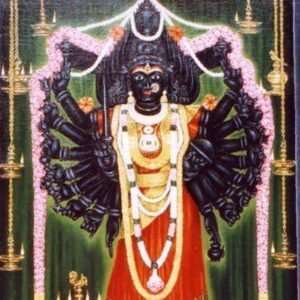 Image Courtesy – Google Images
Image Courtesy – Google Images
How does Goddess Chamundeshwari look?
The Black or Red Colored Chamunda is described as wearing a garland of severed heads or skulls (Mundamala). She is described as having four /eight / ten or twelve arms holding a drum, trident, sword, snake, skull-mace, thunderbolt, a severed head and drinking vessel filled with blood. She stands or sits on the corpse of a man. Generally adorned with bones, skulls and serpants she is seen wearing A Yagnopavita (sacred thread of skulls). She wears a head dress formed of piled-matted hair tied together with snakes or skull ornaments and sometimes a cresent moon is seen on her forehead. She is generally accompanied by evil spirits.
Legend has it that – Chamunda appeared from the frown of the benign Goddess Parvati to kill the demons Chanda and Munda . Here Chamunda is viewed as Parvati.
According to Devi Mahatmyam, Chamunda emerged as Chandika Jayasundara from an eyebrow of Goddess Kaushiki – A Goddess created from the SHEATH of Goddess Durga and was assigned the task of eliminating The Demons – Chanda and Munda – The Generals of Demon King Shumbha- Nishumbha. She fought a fierce battle with The Demons ultimately killing them.
Temples: The Chamundeshwari Temple on Chamundi Hills, Mysore is a very famous temple of Goddess Chamundi. Here The Goddess is identified with Goddess Durga who killed The Buffalo Demon- Mahishasura.
Goddess Chamundeshwari here, The fierce form of Goddess Durga is a tutelary deity held in reverence for centuries by The Maharaja of Mysore.
Article by – Divyaa Doraiswamy
GODDESS PADMAVATHI
Goddess Padmavathi is a major deity in Hinduism and is worshipped as an aspect of Goddess Lakshmi and her second aspect – Bhumi. She is often associated with the Lotus Flower (Padma in Sanskrit) – Symbolizing Purity and Divine Beauty.
Goddess Padmavathi is called Alamelu Mangai and is the Consort of Lord Venkateshwara (Vishnu). She is described as The Daughter of The King of 7 Hills – Akasha Raja and is an Avatar of Goddess Lakshmi. Goddess Padmavathi is majestically seated holding lotuses in her 2 upper hands while her lower hands are in Abhaya Mudra and Varada Mudra respectively.
Legend has it that Goddess Padmavathi was born as the daughter of the King of 7 Hills and is said to have emerged from A Lotus Flower in a pond in the nearby town of Padmavathi Kshetram. She was later discovered by Lord Venkateshwara while he was on a hunting expedition.
Temple: The most popular shrine of Goddess Padmavathi is The Padmavathi Thayar Temple situated in Tiruchanur – a suburb of Tirupathi. Tradition dictates that every pilgrim to Tirupathi must offer obeisance at this temple before visiting Perumal at the Venkateshwara Temple at Tirumala.
Article by – Divyaa Doraiswamy
GODDESS SHITALA
Goddess Shitala also called Shitala Maa is a Hindu Goddess generally worshipped in Northern India. She is known to be an incarnation of Goddess Parvati and is believed to cure small pox, measles and other infectious diseases.
Goddess Shitala’s worship dates back to ancient times and she is mentioned in various Hindu Texts like The Skanda Purana and Vayu Purana.
 Image Courtesy – Google Images
Image Courtesy – Google Images
How does Goddess Shitala look ?
Goddess Shitala is depicted as a fair skinned Goddess with a serene and benevolent countenance. She is a Warrior Goddess riding on a donkey with a broom in her hand. She is often portrayed with a smallpox pustule on her forehead. The pustule symbolises the eradication of the disease.
Goddess Shitala is also associated with the power of healing and protection. Her blessings are often sought to ward off diseases and epidemics.
According to popular beliefs – Goddess Shitala emerged during the Great Churning of the Cosmic Ocean called Samudra Manthan. As The Gods and Demons churned the ocean to obtain the elixir of immortality, a poisonous substance called HALAHALA emerged threatening to engulf the entire universe. Lord Shiva inturn summoned Goddess Shitala Devi empowering her to combat the deadly effects of the poison. Goddess Shitala boldly consumed The HALAHALA neutralising its potency and safeguarding the universe from its destructive power.
Festivals:
Shitala Astami falls in the month of Chaitra (March-April) as per The Hindu Calendar. Devotees observe a fast and offer food and water to the poor on this day as per the ritual.
In some parts of India – Shitala Shasti and Shitala Saptami are the celebrated festivals.
BASODA Festival for Goddess Shitala is celebrated in UP, MP and Bihar on the 8th Day of Krishna Paksha of The Hindu Calendar Bhadrapada (Aug-Sep).
Article by – Divyaa Doraiswamy
GODDESS SHAKAMBARI
Goddess Shakambari also called Shatakshi is the Goddess of Nourishment, Harvest and Abundance. She is an incarnation of Mahadevi and is identified with Goddess Lakshmi and Goddess Durga in Hinduism.
The name Shakambari is derived from the words Shaka meaning Vegetables/Greens and Bhari meaning Provider/Holder or Bearer. Goddess Shakambari is called Shatakshi meaning one who has countless eyes and shares her form with Shatakshi and Durga.
How does Goddess Shakambari look?
Goddess Shakambari is a blue complexioned Goddess wearing a jewelled crown symbolizing The Mahavidyas. She has bright eyes and the 3 eyes on her forehead symbolise Jnana. Her breasts are ever ready to feed and veiled by a red saree.
In her right upper hand she holds a lotus symbolizing the beauty of life and non attachment to worldly life. The lotus here is thronged by bees symbolizing the nectarine wisdom of The Vedas. The upper left hand holds a bow and an arrow ever ready to protect, defend and wage war against her children’s enemies symbolizing fierceness. Her lower hands carry flowers, herbs, roots and vegetables symbolizing her status as The Goddess of Vegetation and Feeding. Herbs symbolise health and medicine.
Her whole body is a 1000 eyed with tears rolling to form a stream of sympathy – also a reason why she is called Shatakshi.
Legend has it that after The Demon Durgamasura sought to plunge the earth in drought and scarcity, a century of suffering endured on earth. The sages finally remembered Goddess Lakshmi after The Asura had made them forget about The Vedas. She appearaed on Earth in a dark hued blue form casting her 1000 eyes on the sages. When the sages extolled and chanted the Hymns of Ishwari – the 4 handed Goddess appeared bearing a lotus, arrows, bow ,vegetables, fruits, flowers and roots.
The Devi Bhagavata Purana states that seeing the misery of the people, Goddess Shakambari showered incessant tears from her eyes streaming into rivers and offering medicines.
Article by – Divyaa Doraiswamy
LORD SHIVA
Lord Shiva – The God of Destruction is the most important God in The Hindu Pantheon alongside Lord Brahma (The Creator) and Lord Vishnu (The Preserver) `and is considered to be A Member of The Holy Trinity (Trimurthi) of Hinduism.
Lord Shiva is the most important God of The Shaivism Sect and The Protector of The Sacred Texts – The Vedas.
The Sect of Shaivism holds that Lord Shiva is The Supreme Being which all other Gods are aspects of. The Shaivite Tradition calls Lord Shiva –The Supreme Lord who Creates, Protects and Transforms The Universe.
How does Lord Shiva Look?
Lord Shiva is the dark skinned God with a blue neck and a third eye on his forehead. He has matted hair with a crescent moon and the River Ganga flowing from it. He wears a tiger skin, ash and a snake around his neck. He holds a trident and a drum. Nandi (The Bull) is his vehicle and he is a Yogi who can sit still or dance.
Lord Shiva is represented in many forms and to name a few..
-In a Pacific Mood with his consort Goddess Parvathi and Son Muruga
-As a Cosmic Dancer – Nataraja
-As a naked ascetic ,as a mendicant beggar, as a yogi and as a dalit accompanied by a dog (Bhairava)
-The union of Lord Shiva and his consort in one body – half male and half female – Ardhanarishwara
-The Lord of Cattle – Pashupatha
The Sect –Shaivism
Shaivism is one of the 4 Major Sects of Hinduism – the others being Vaishvanism, Shaktism and Smartaism. The followers of Shaivism called Shaivas revere Lord Shiva as The Supreme Being.
Shaivas believe that Lord Shiva is ALL and in all The Creator, The Preserver, The Destroyer , The Revealor and The Concealor of all that is. Lord Shiva is The Primal Self, The Pure Consciousness and Absolute Reality in The Shaiva Traditions.
Festivals
Maha Shivaratri is a major Hindu Festival – the one that is solemn and theologically marks a remembrance of overcoming darkness and ignorance in life and the world.
The other festival is Kartik Purnima which is Lord Shiva’s victory over the 3 Demons known as Tripurasura.
Thiruvathira is another festival observed in Kerala.
Temples
The Dharmasthala Temple, Dakshin Karnataka
The Murudeshwara Temple, Uttara Karnataka
The Arunachaleshwara Temple, Thiruvannamalai – Tamil Nadu
The Kailasa Temple, Ellora Caves, Aurangabad – Maharastra and
The Bhimashankar Temple, Pune
The Leaning Temple of Huma , Sambalpur
Article by – Divyaa Doraiswamy
